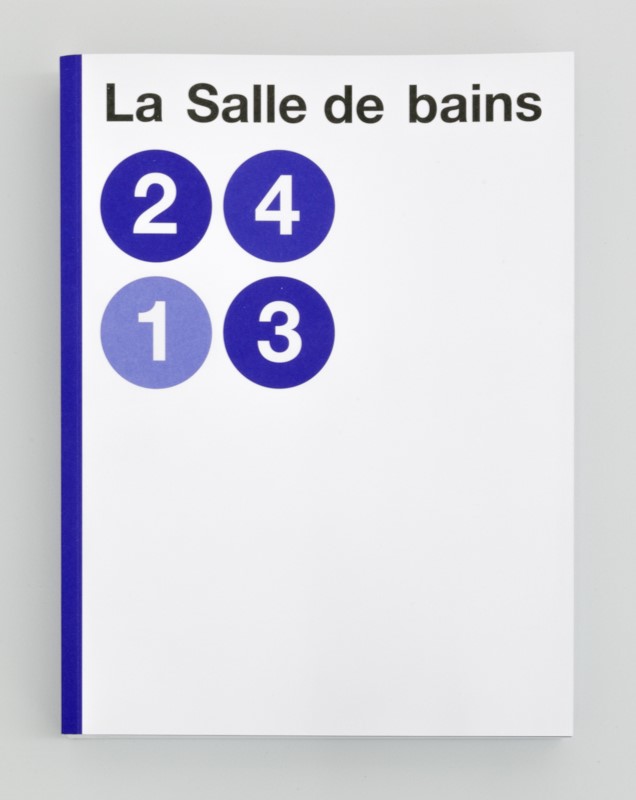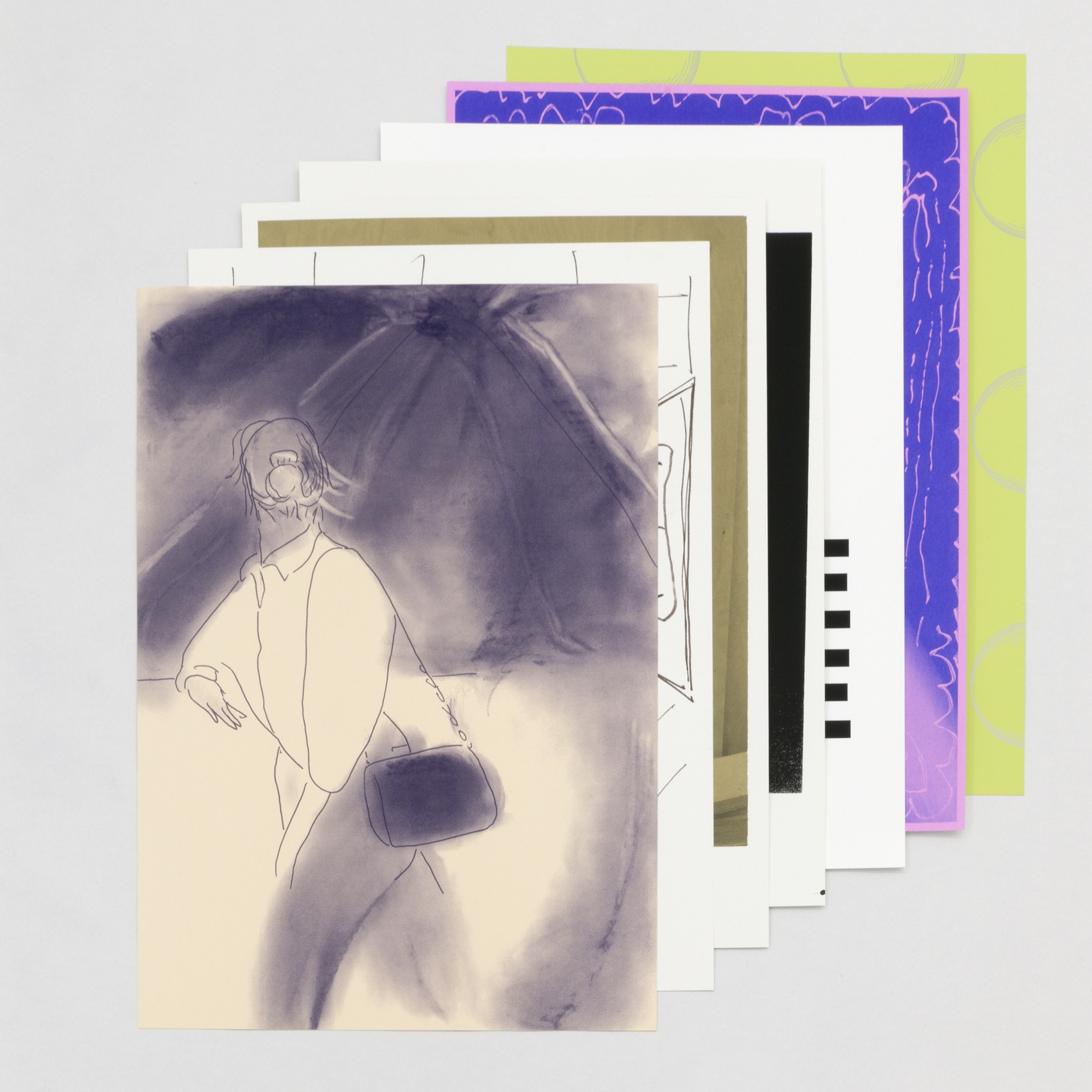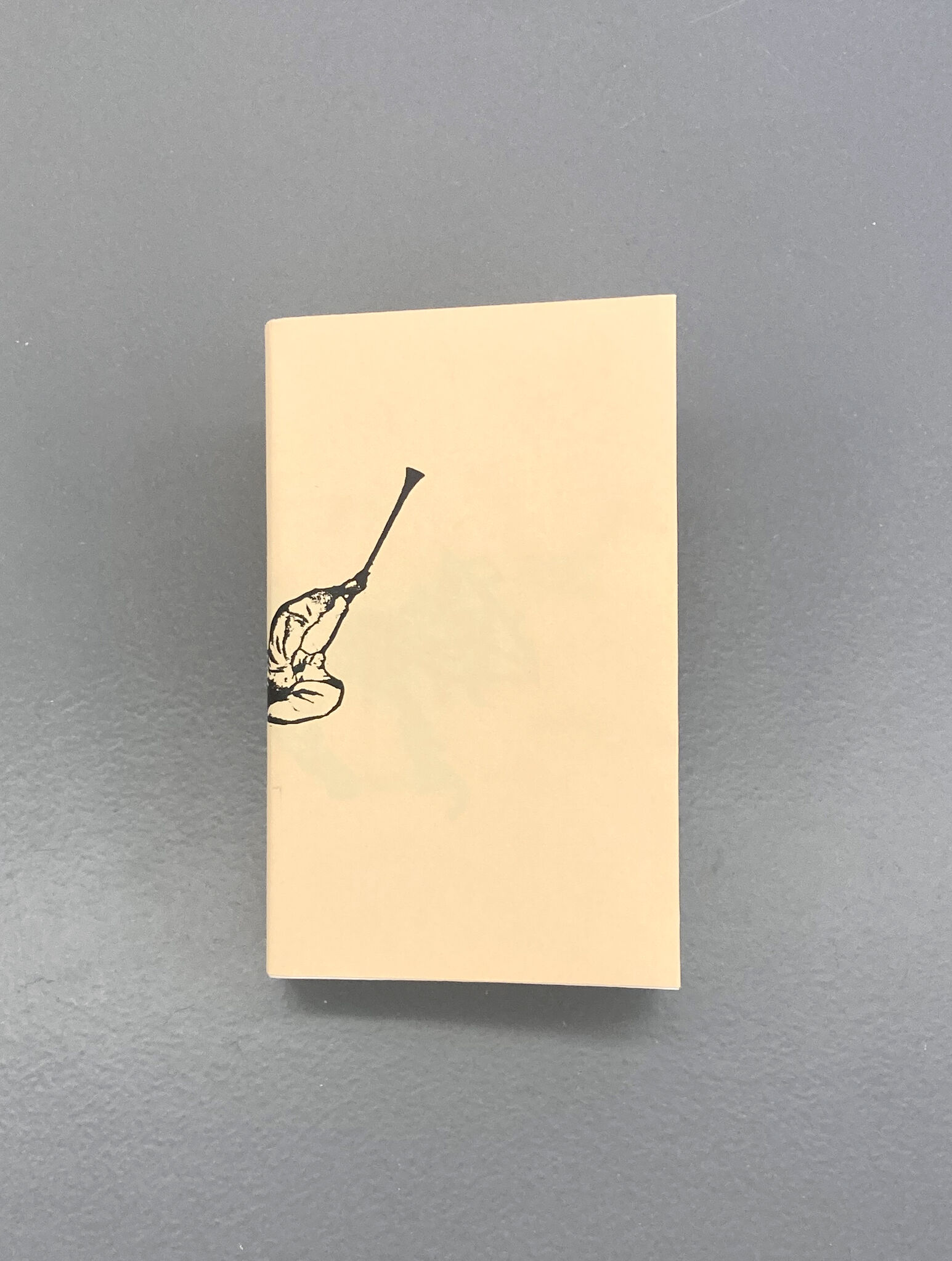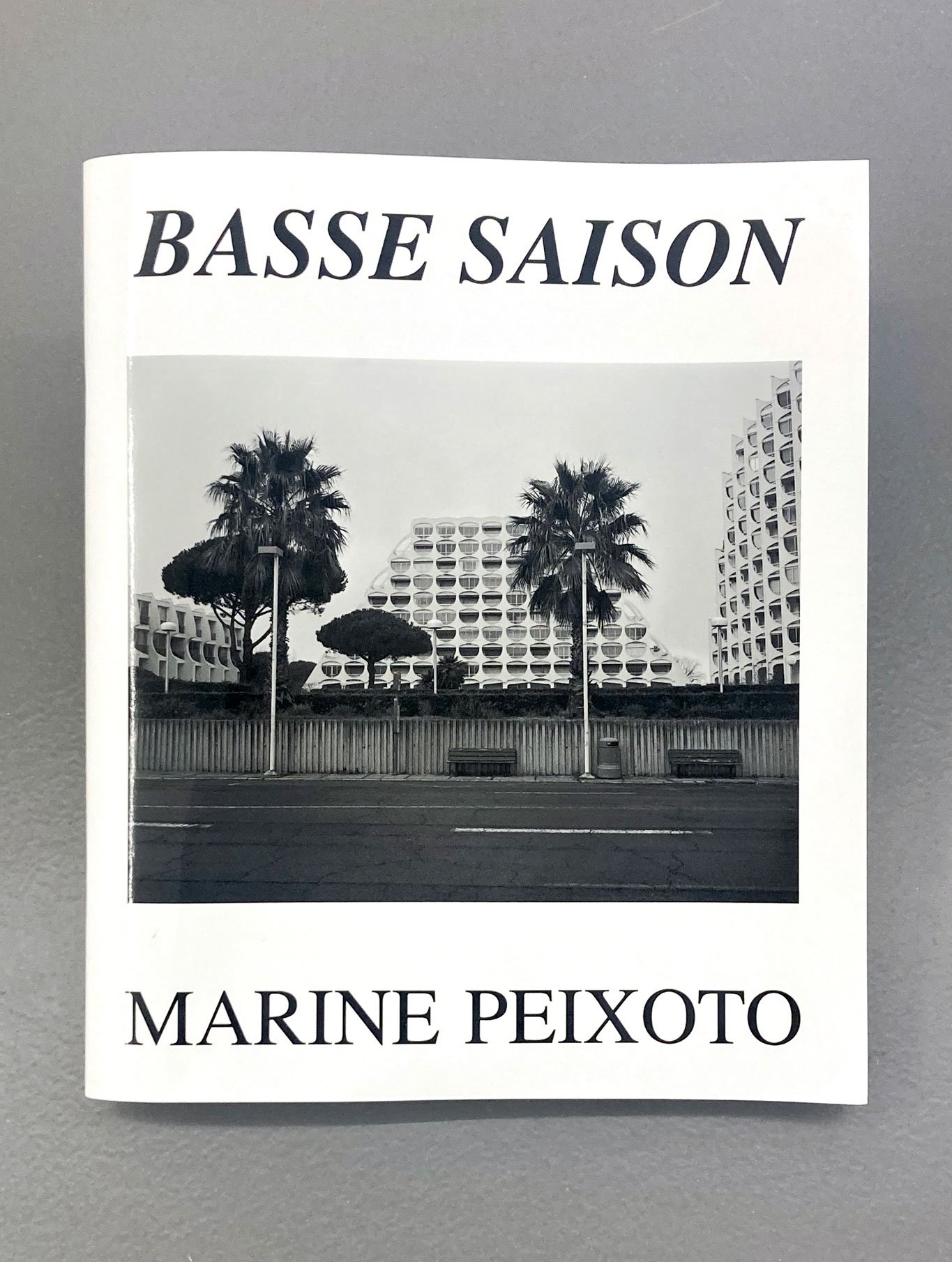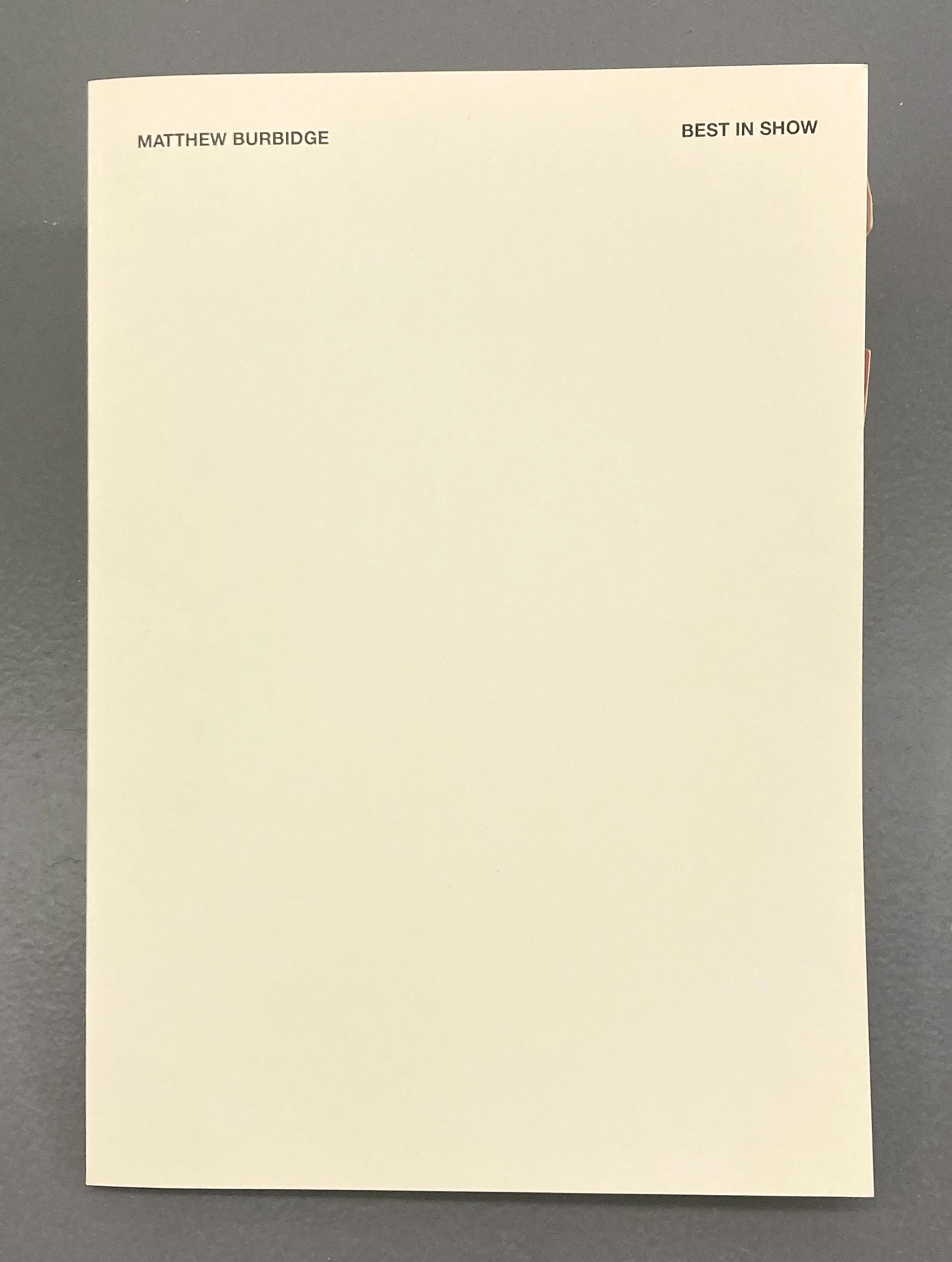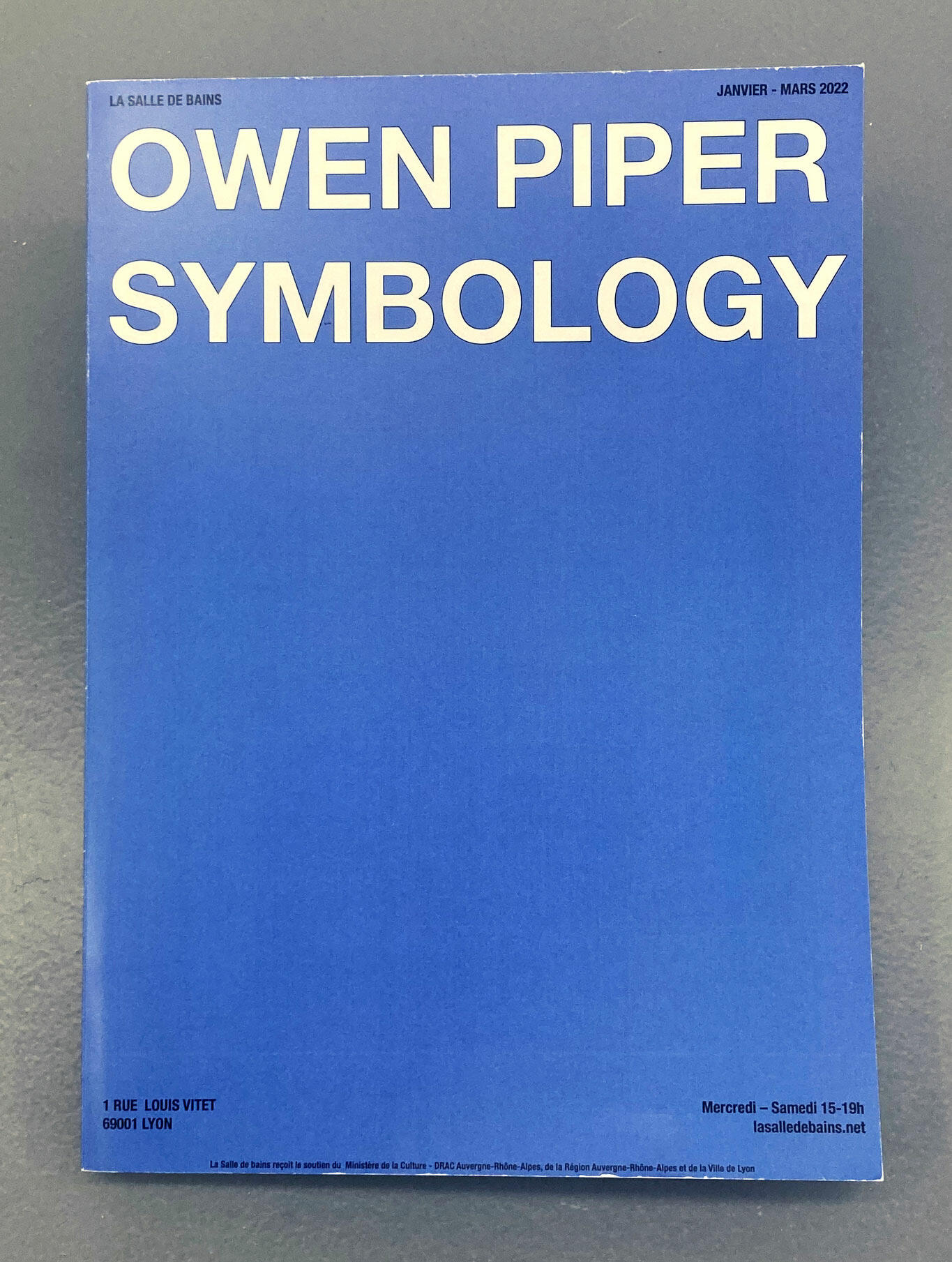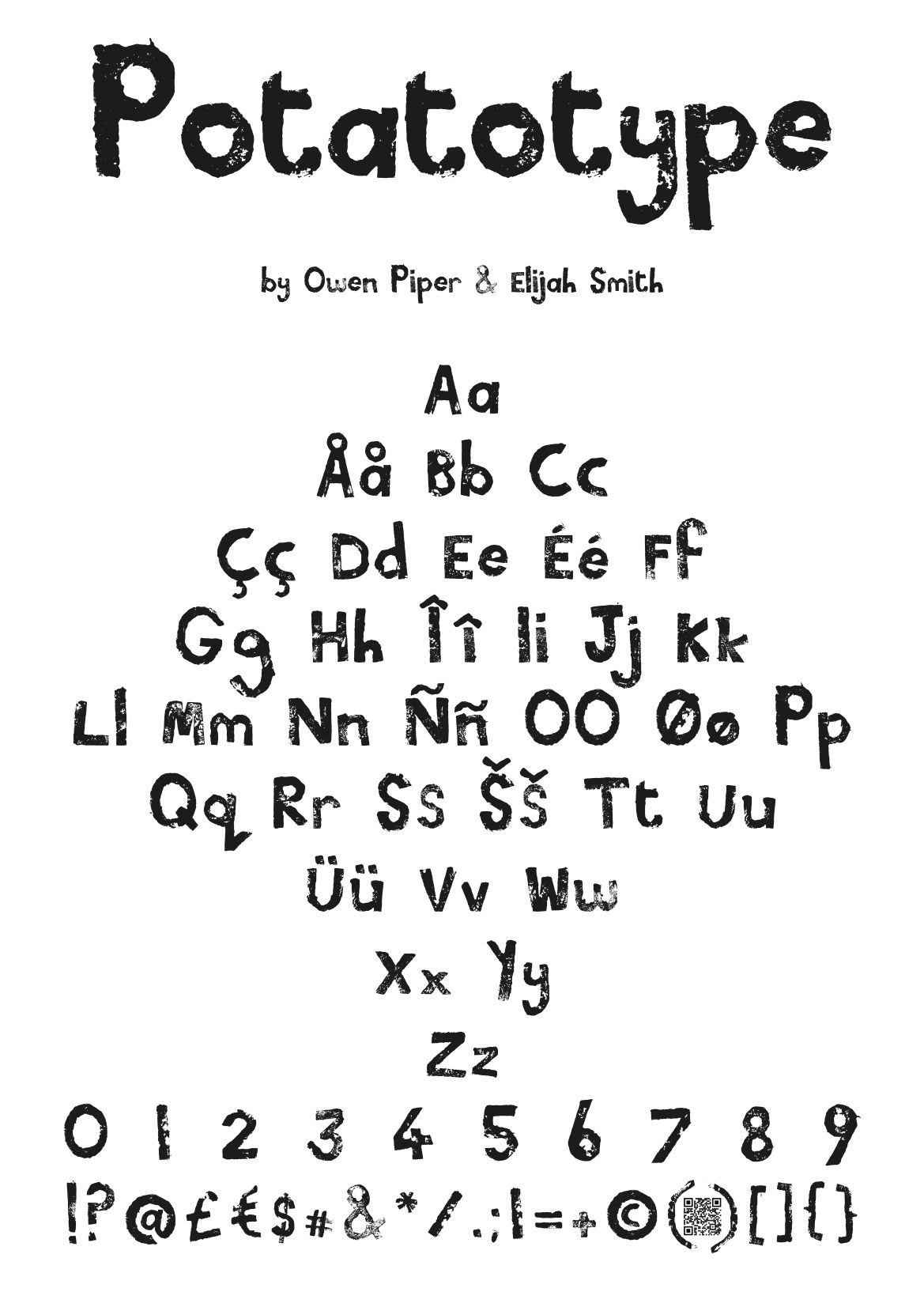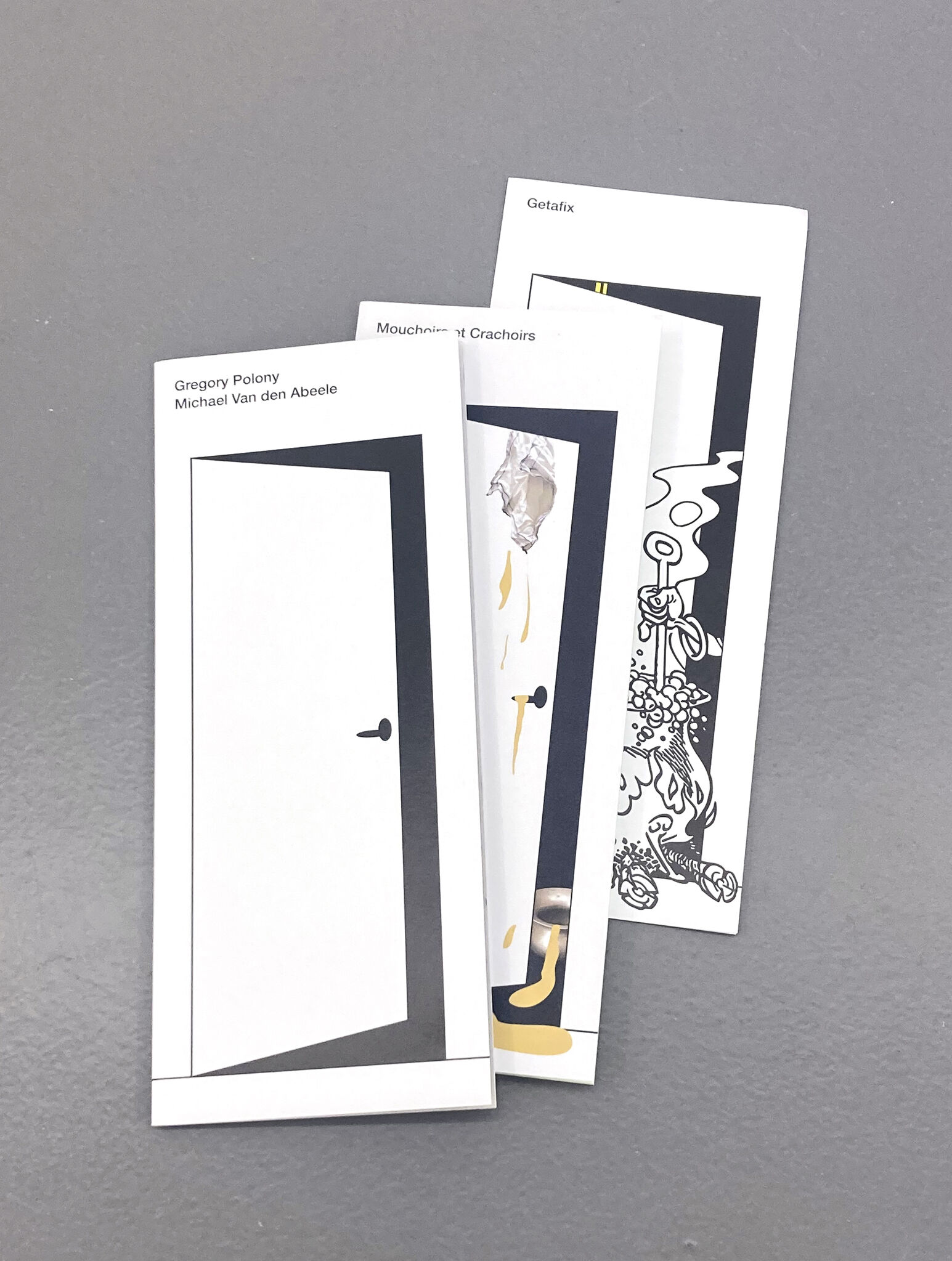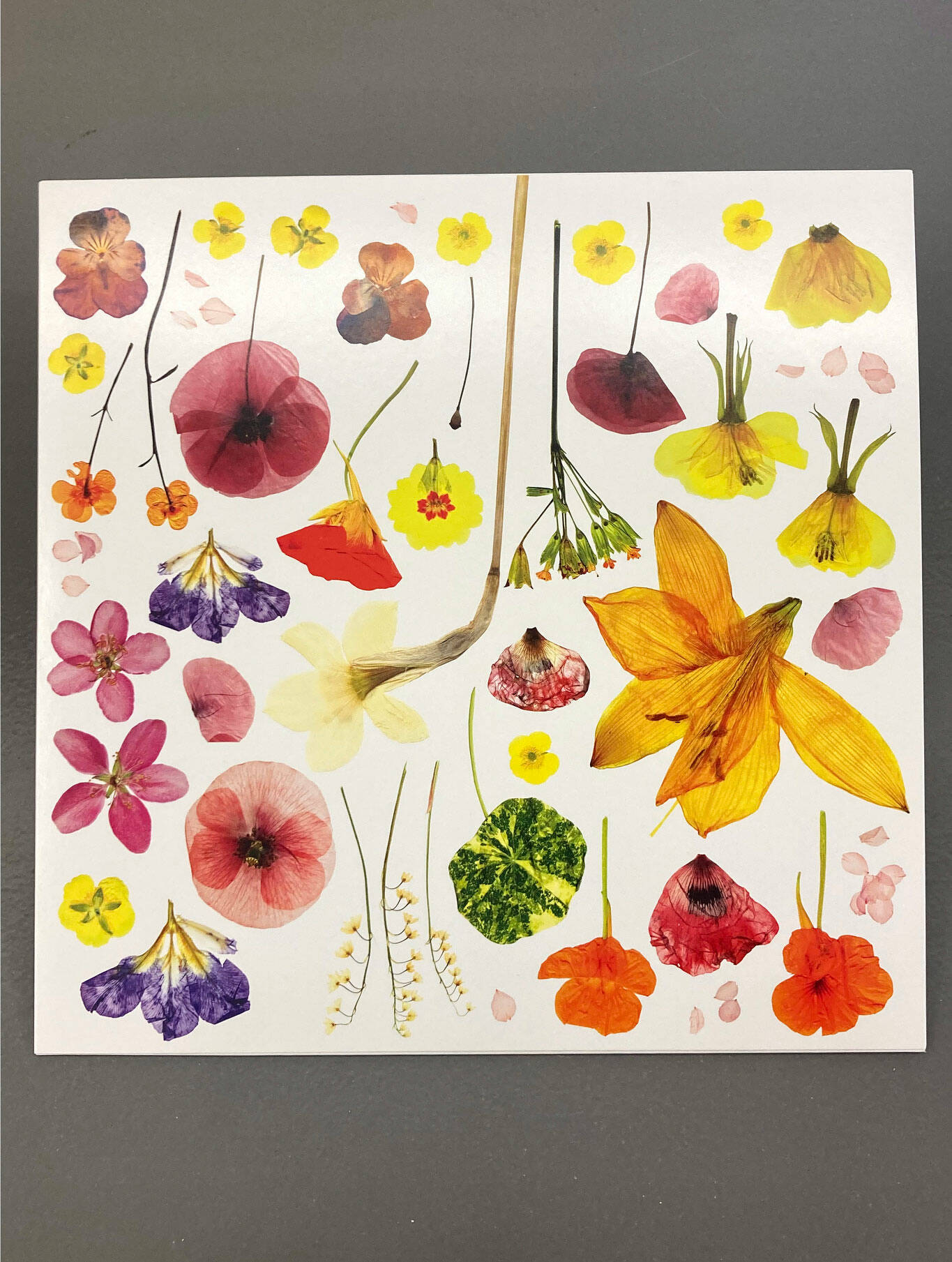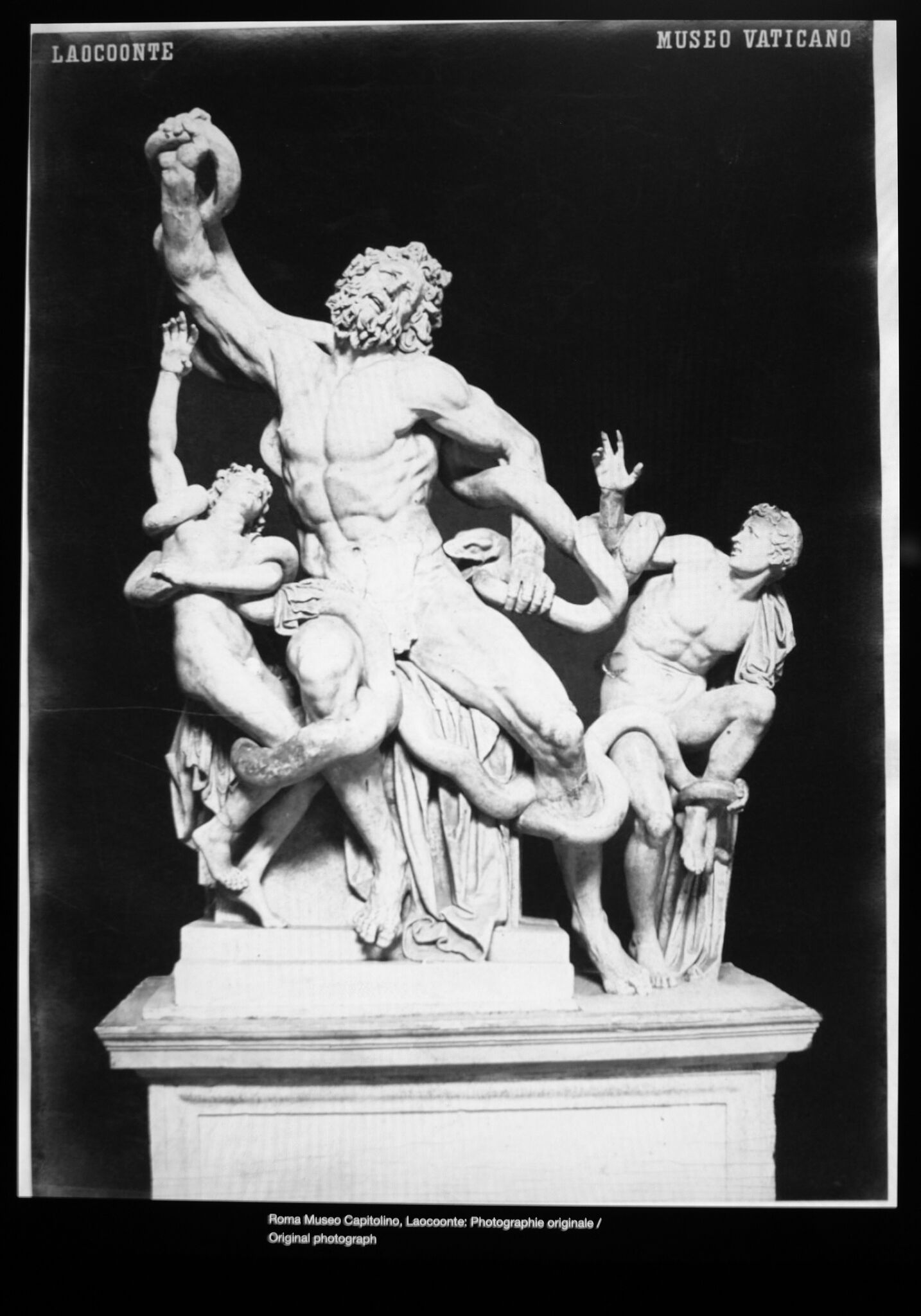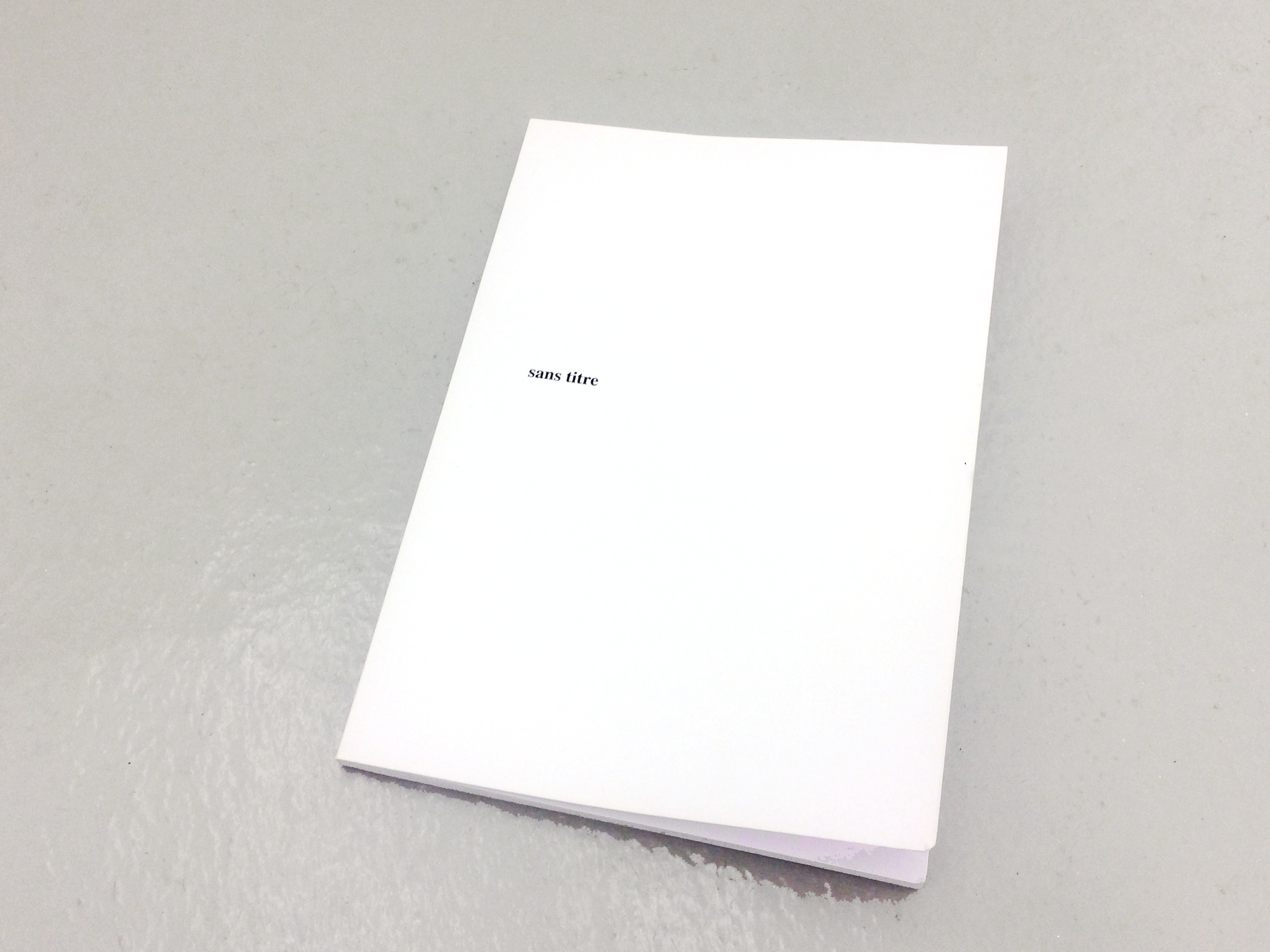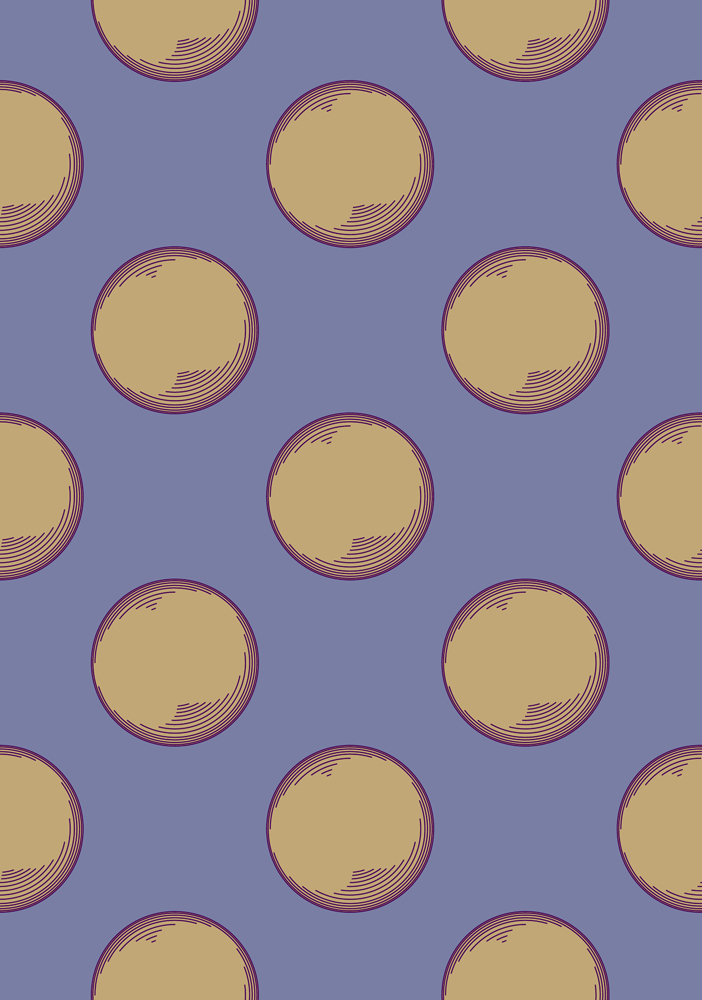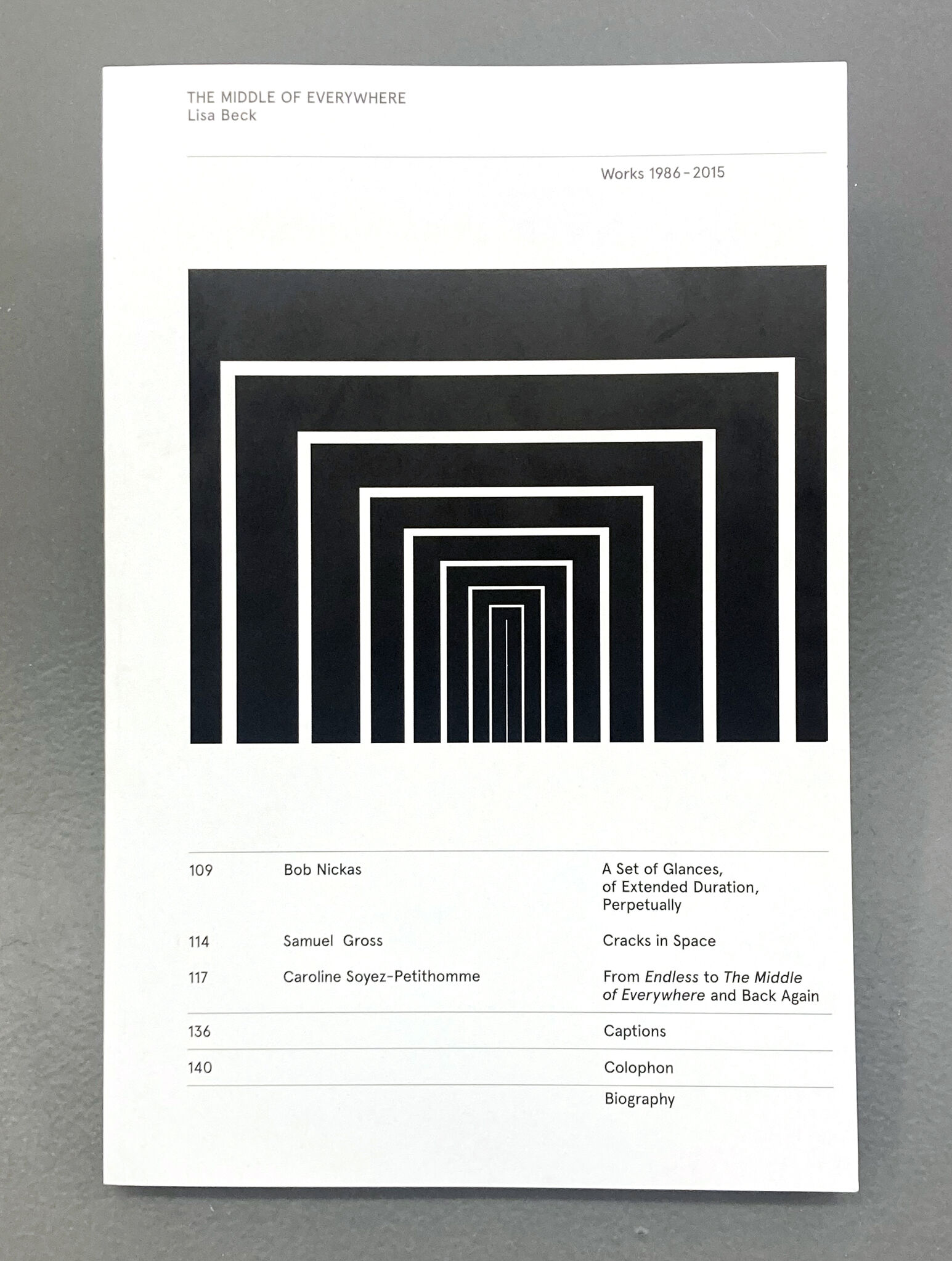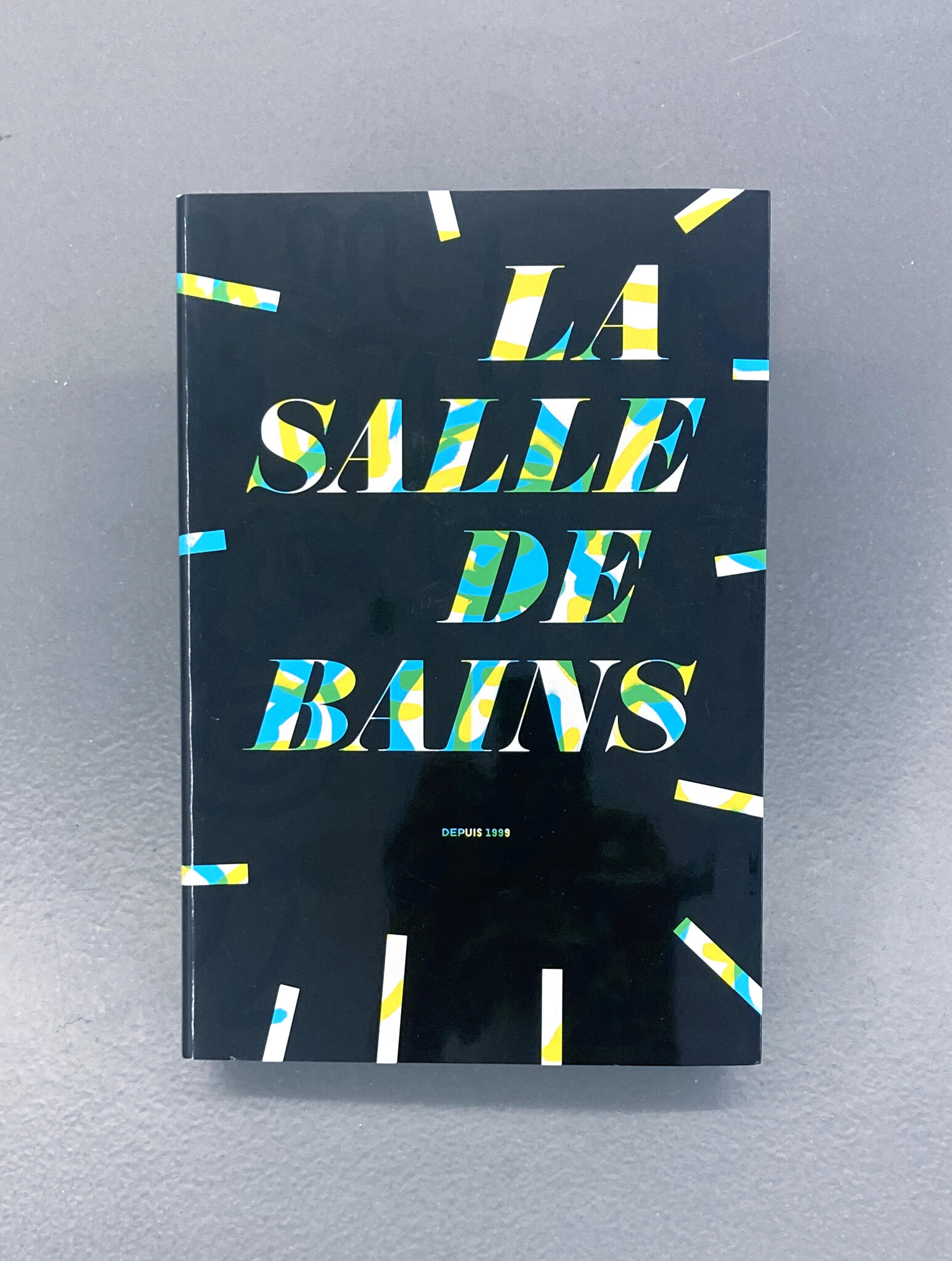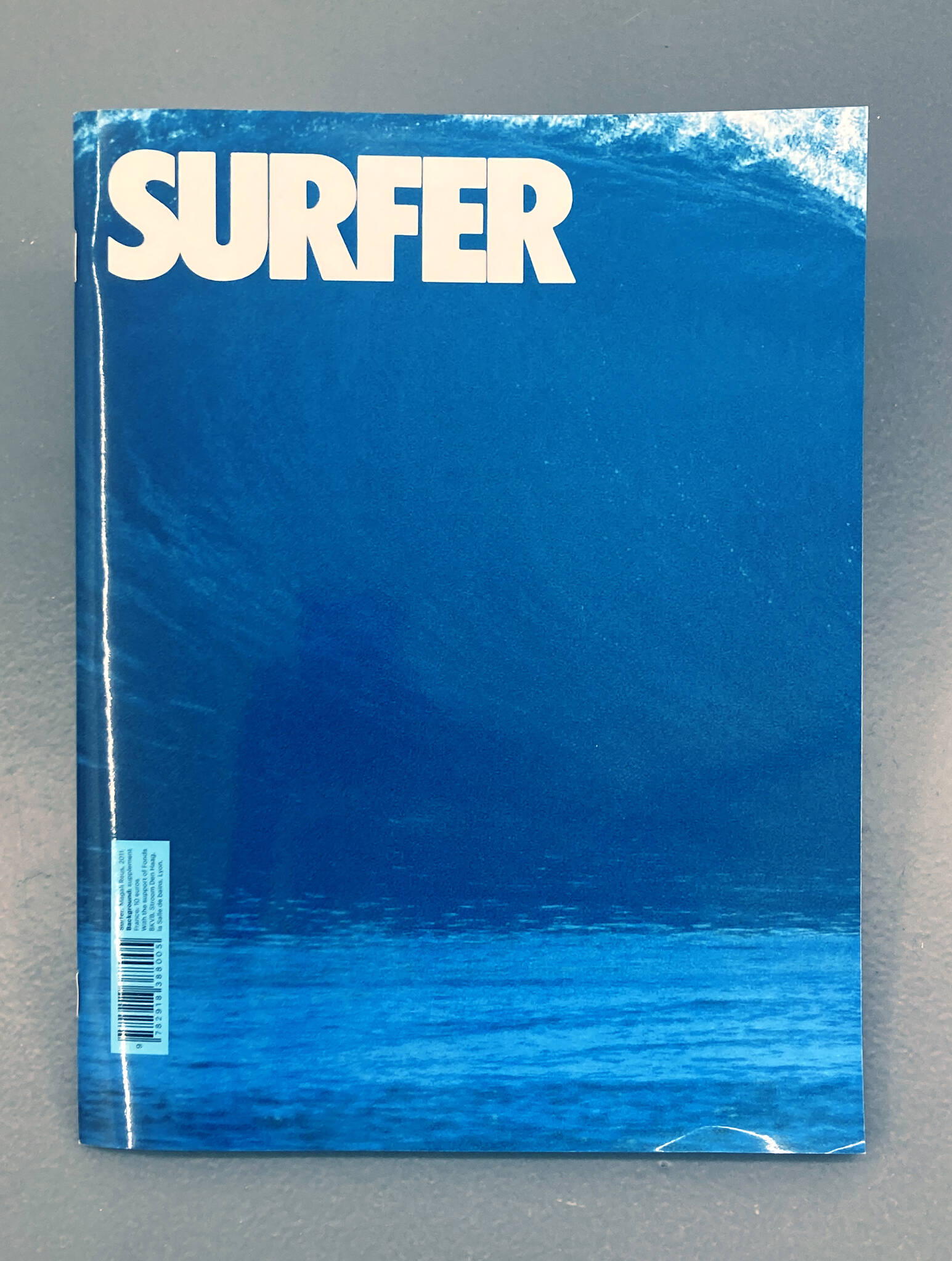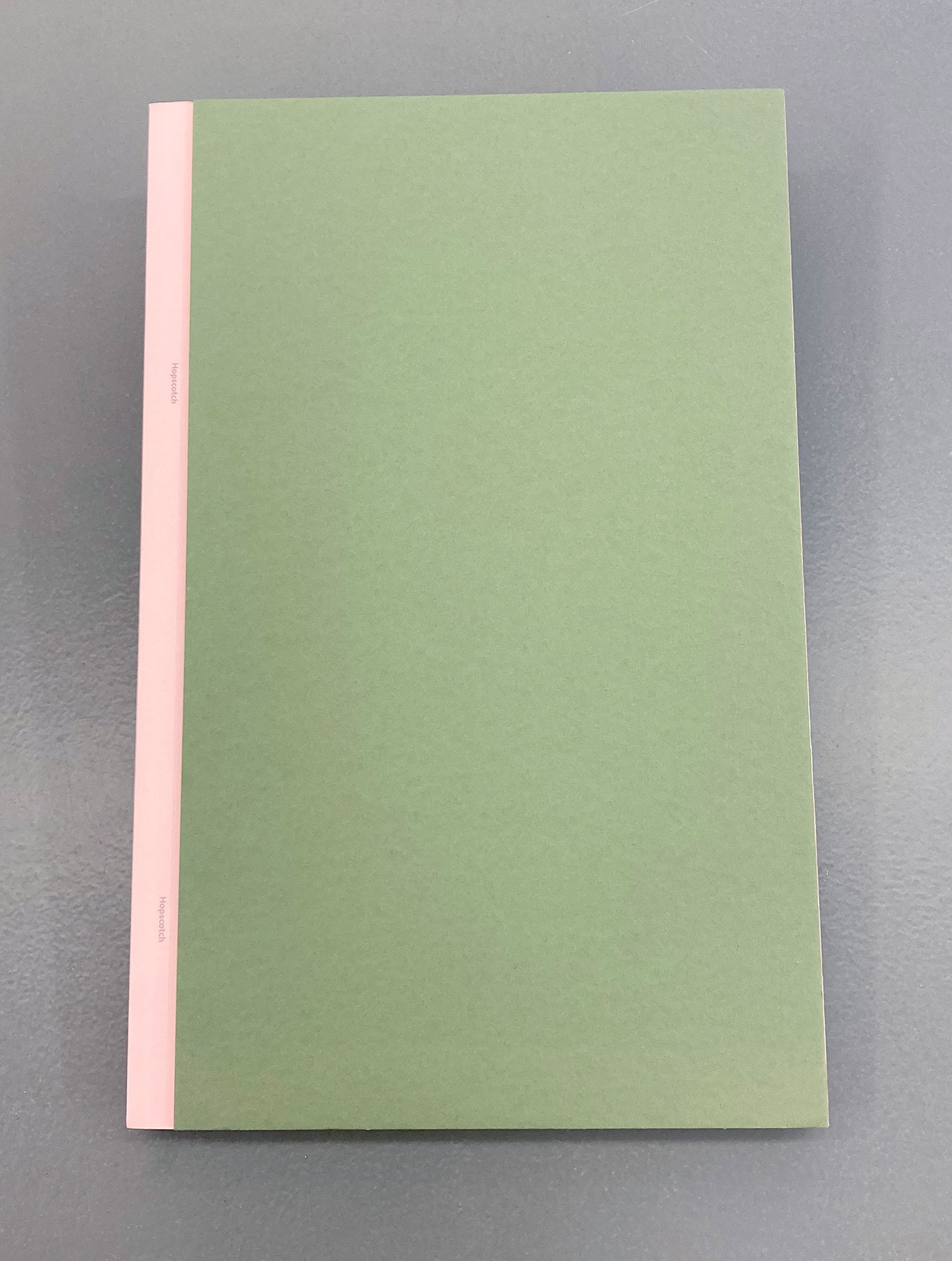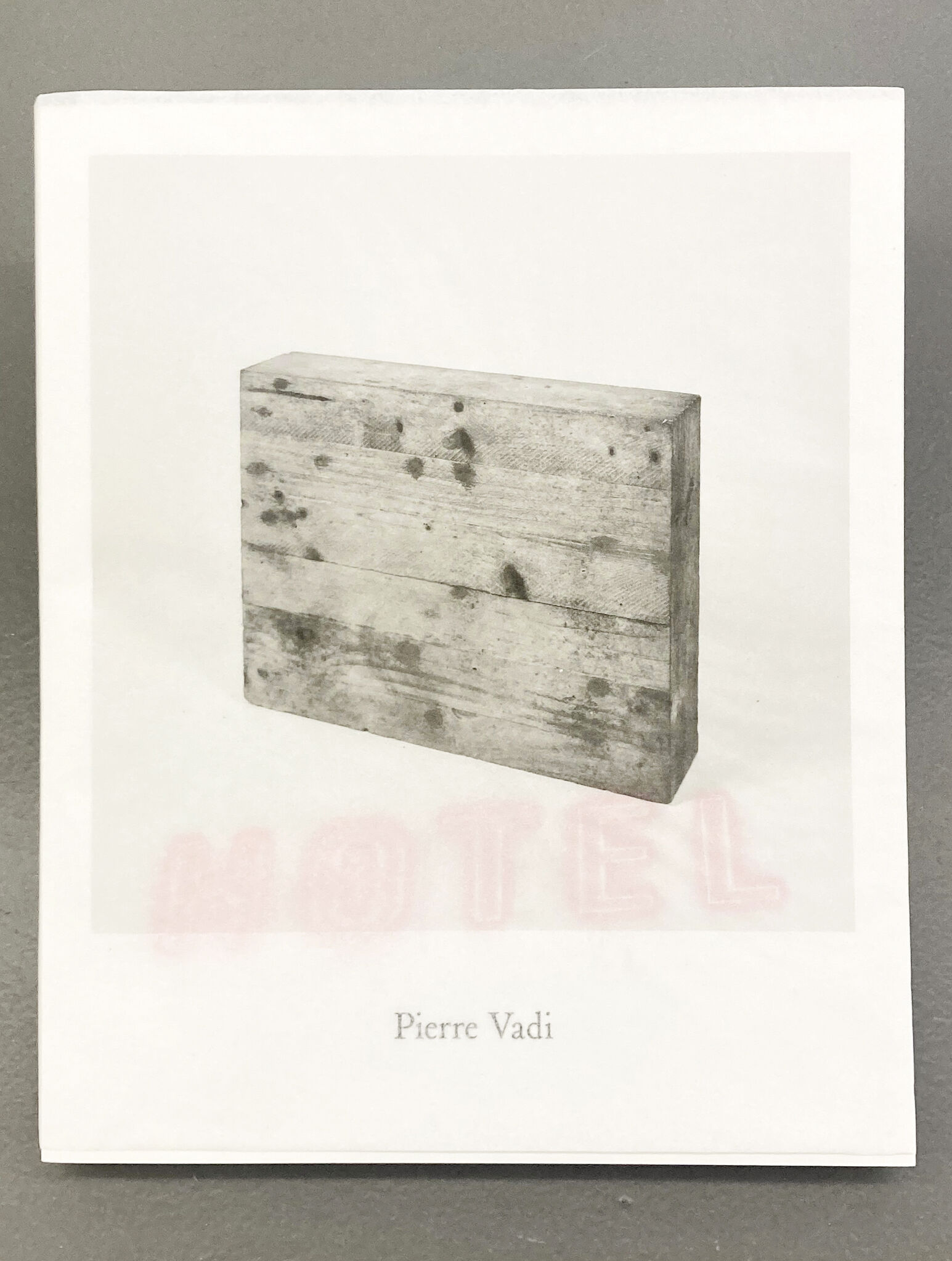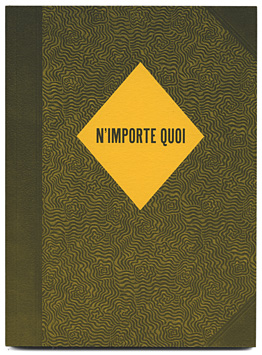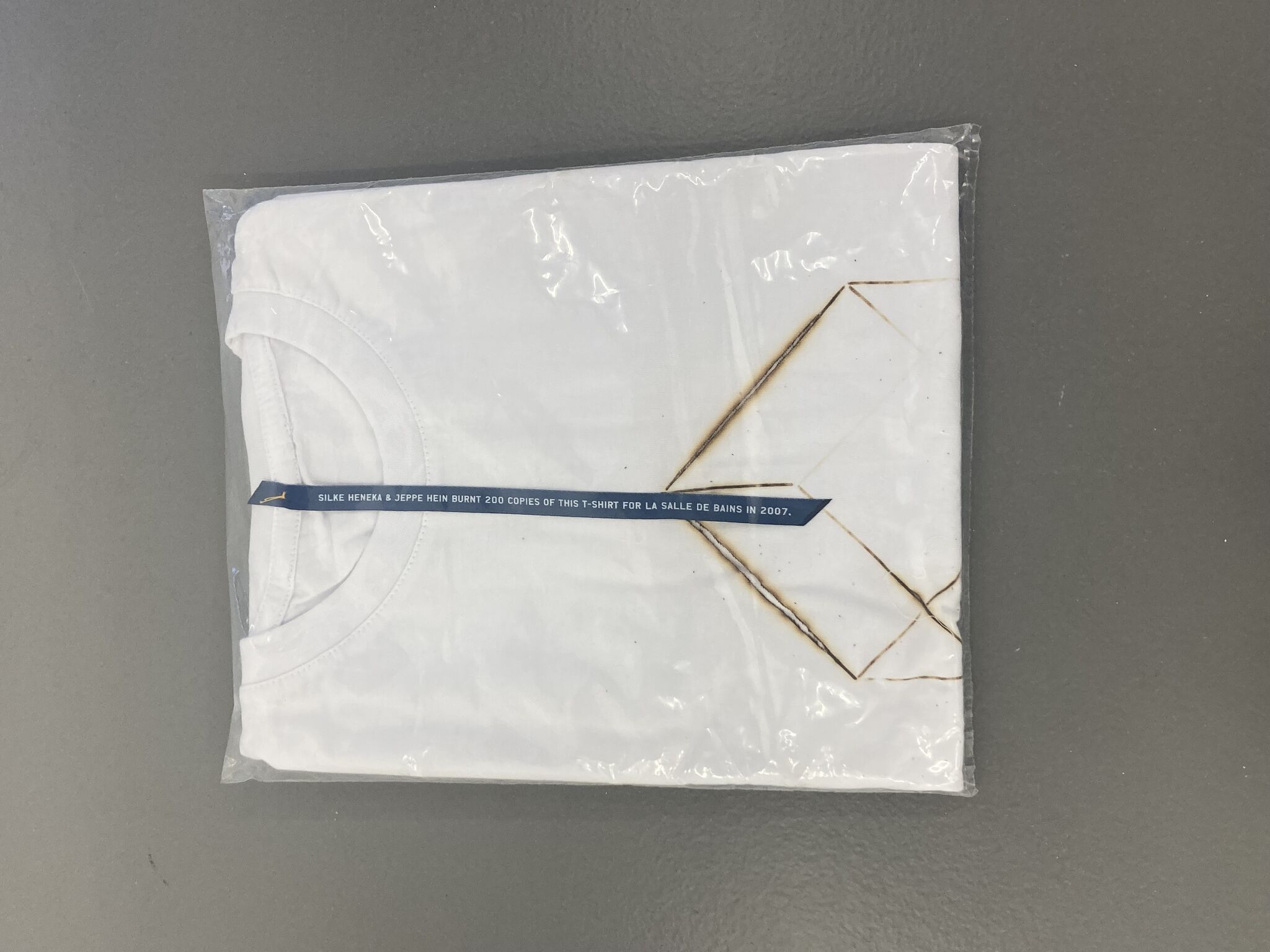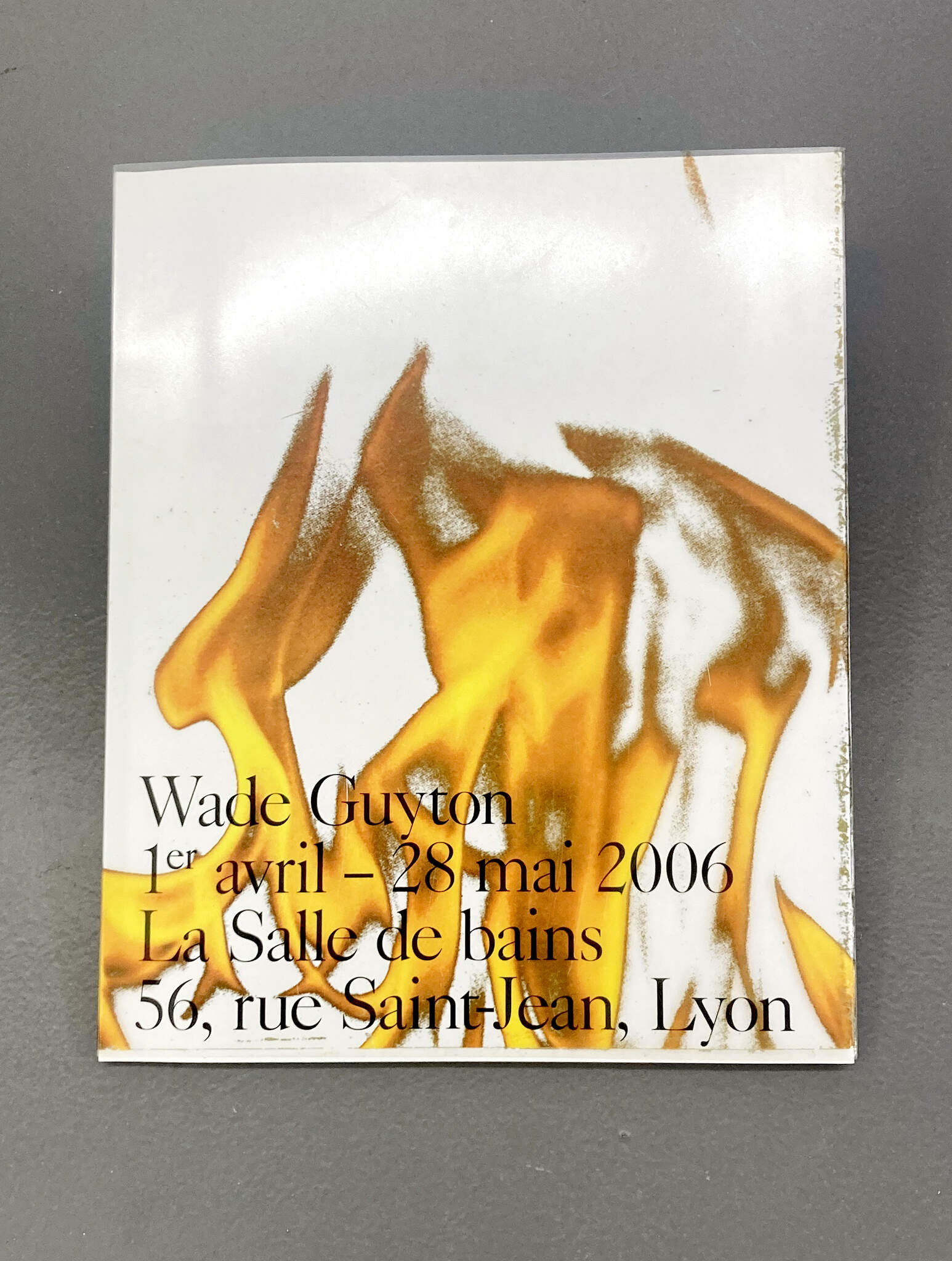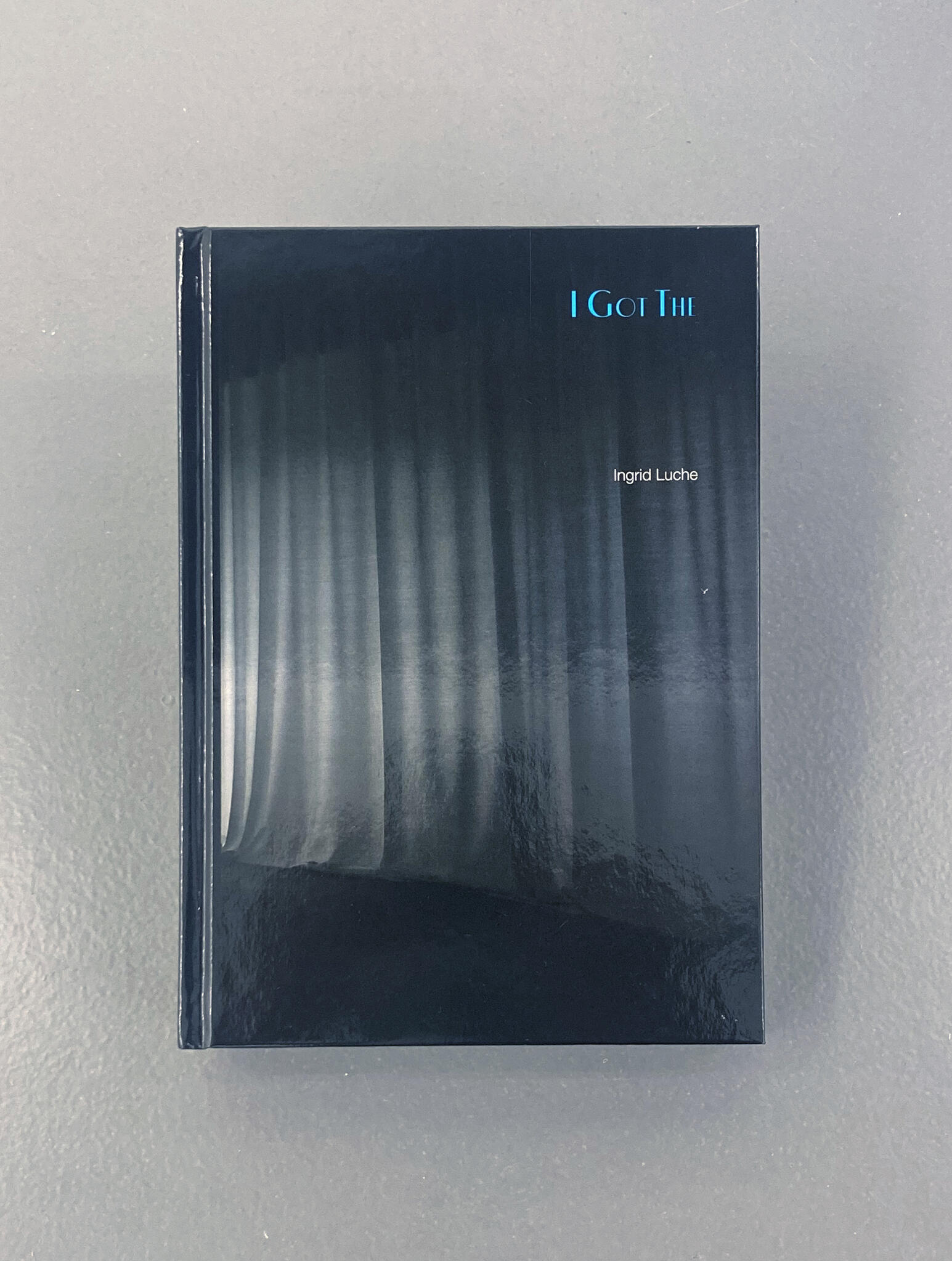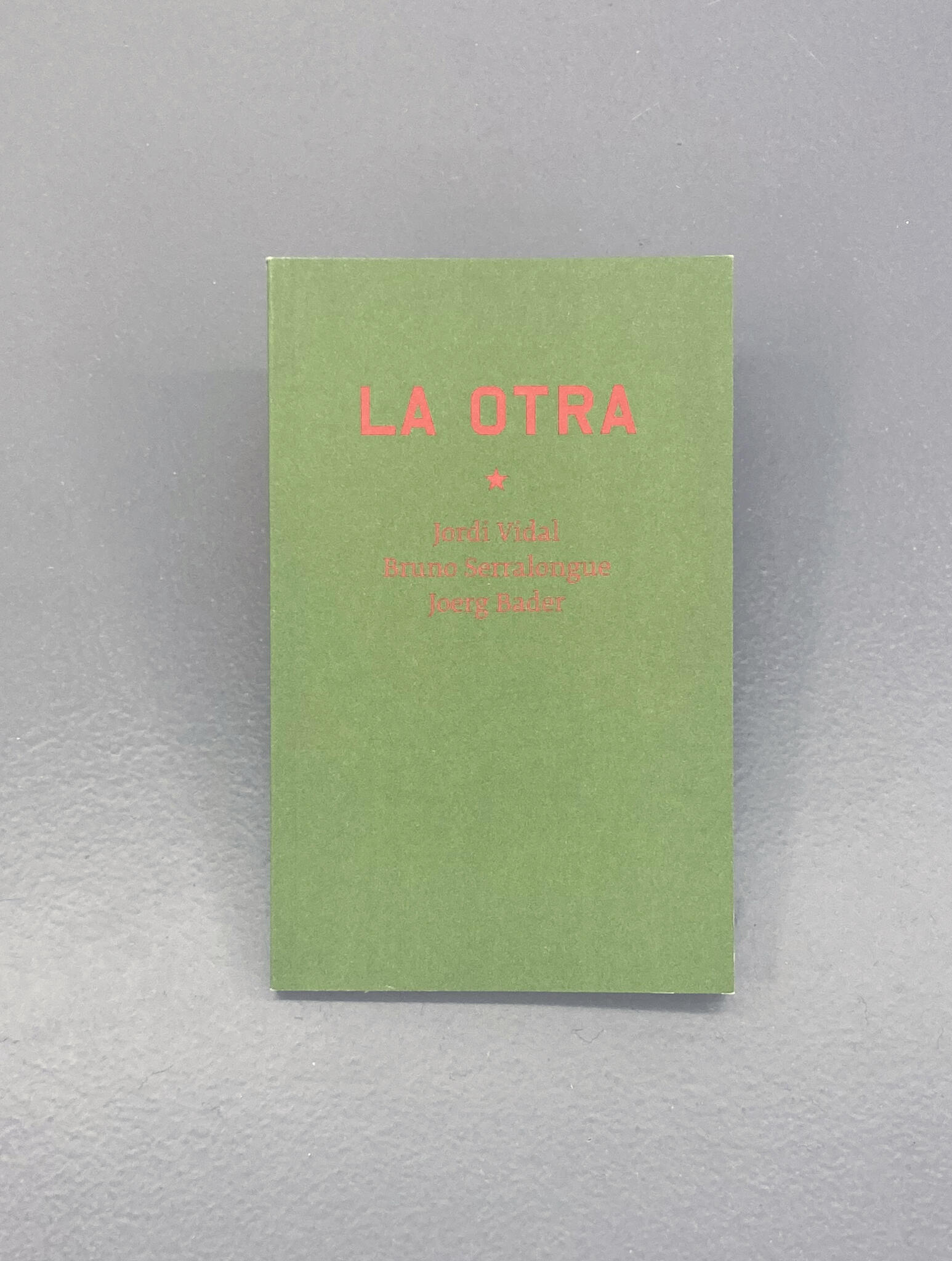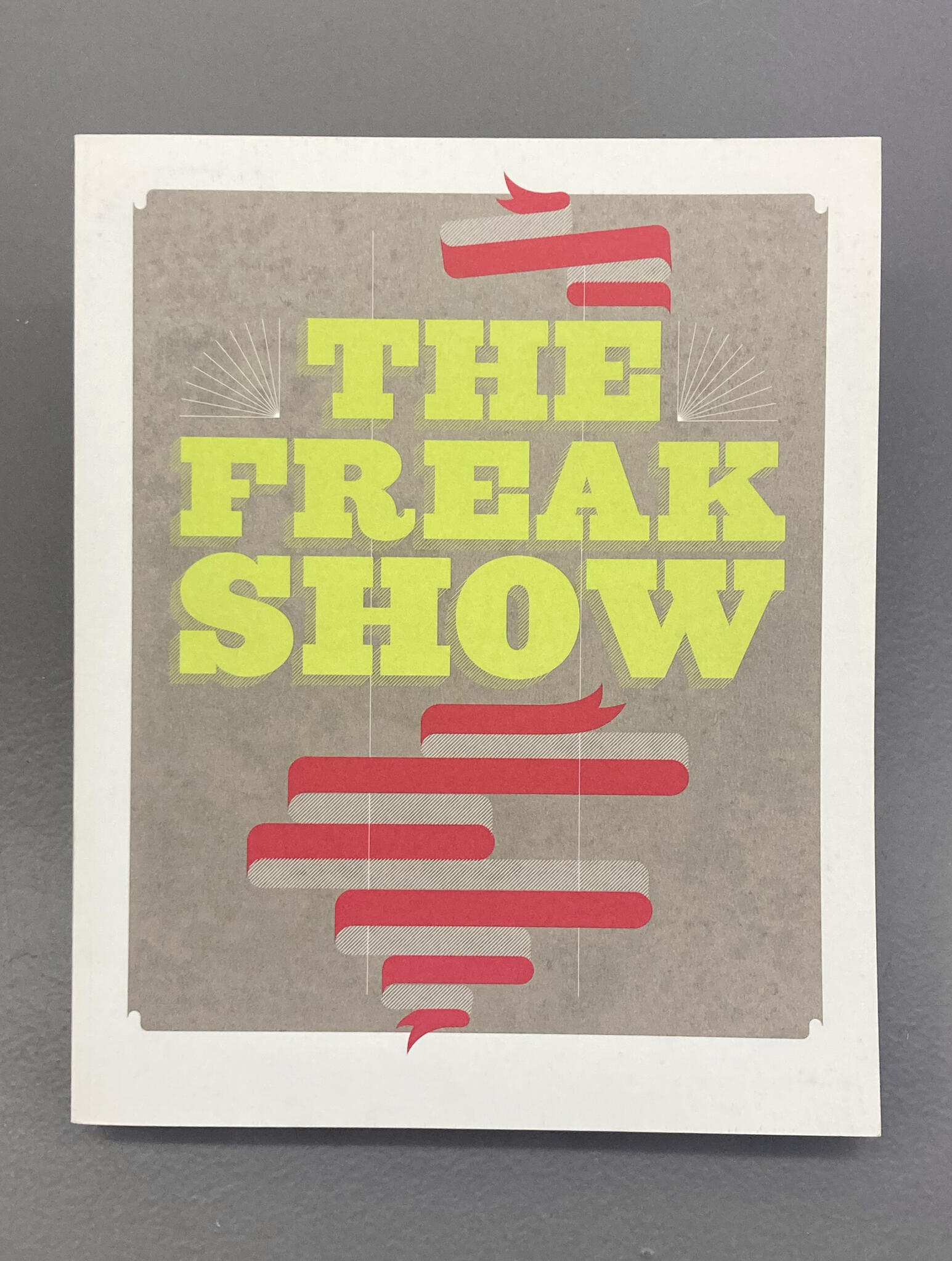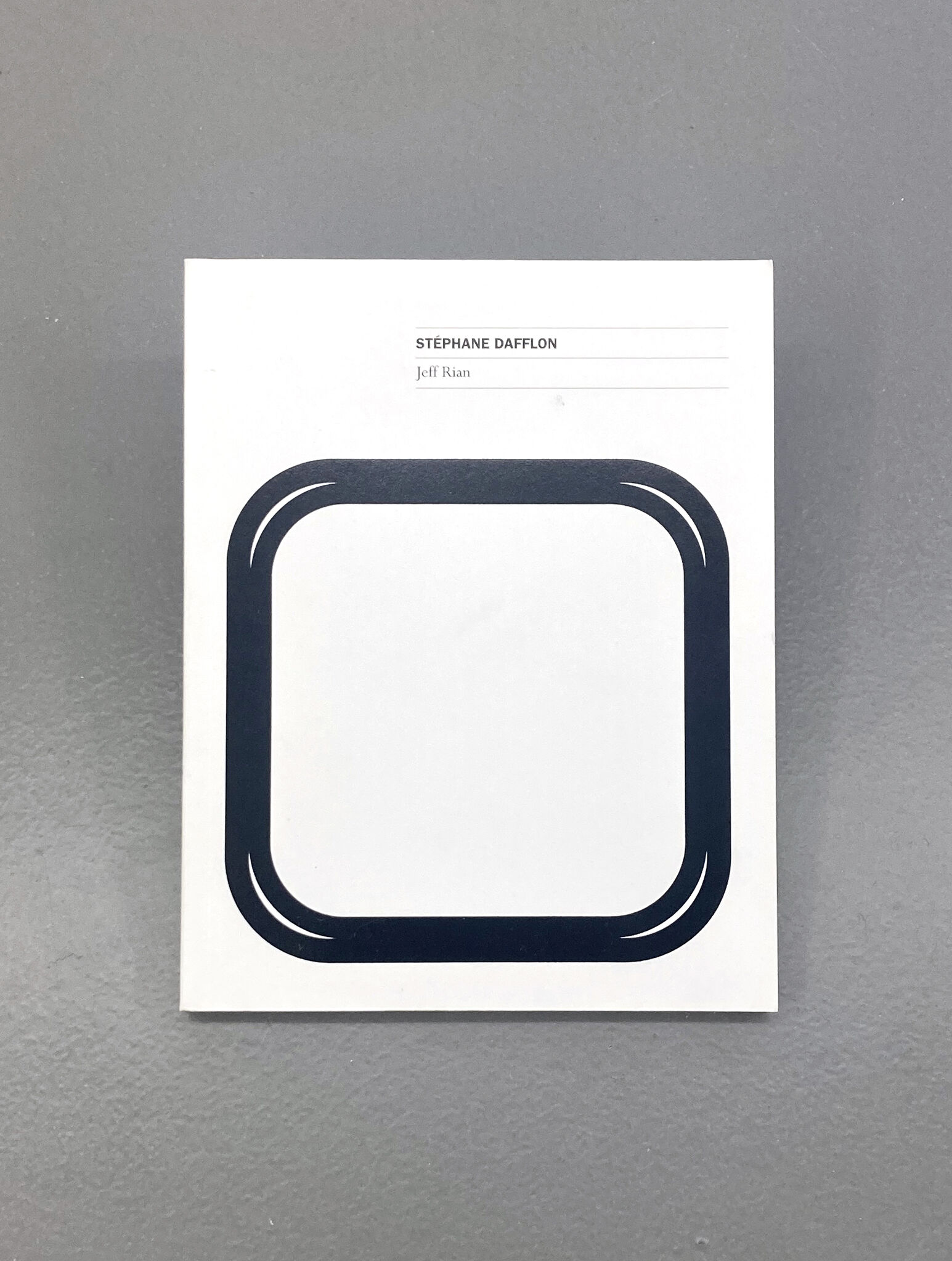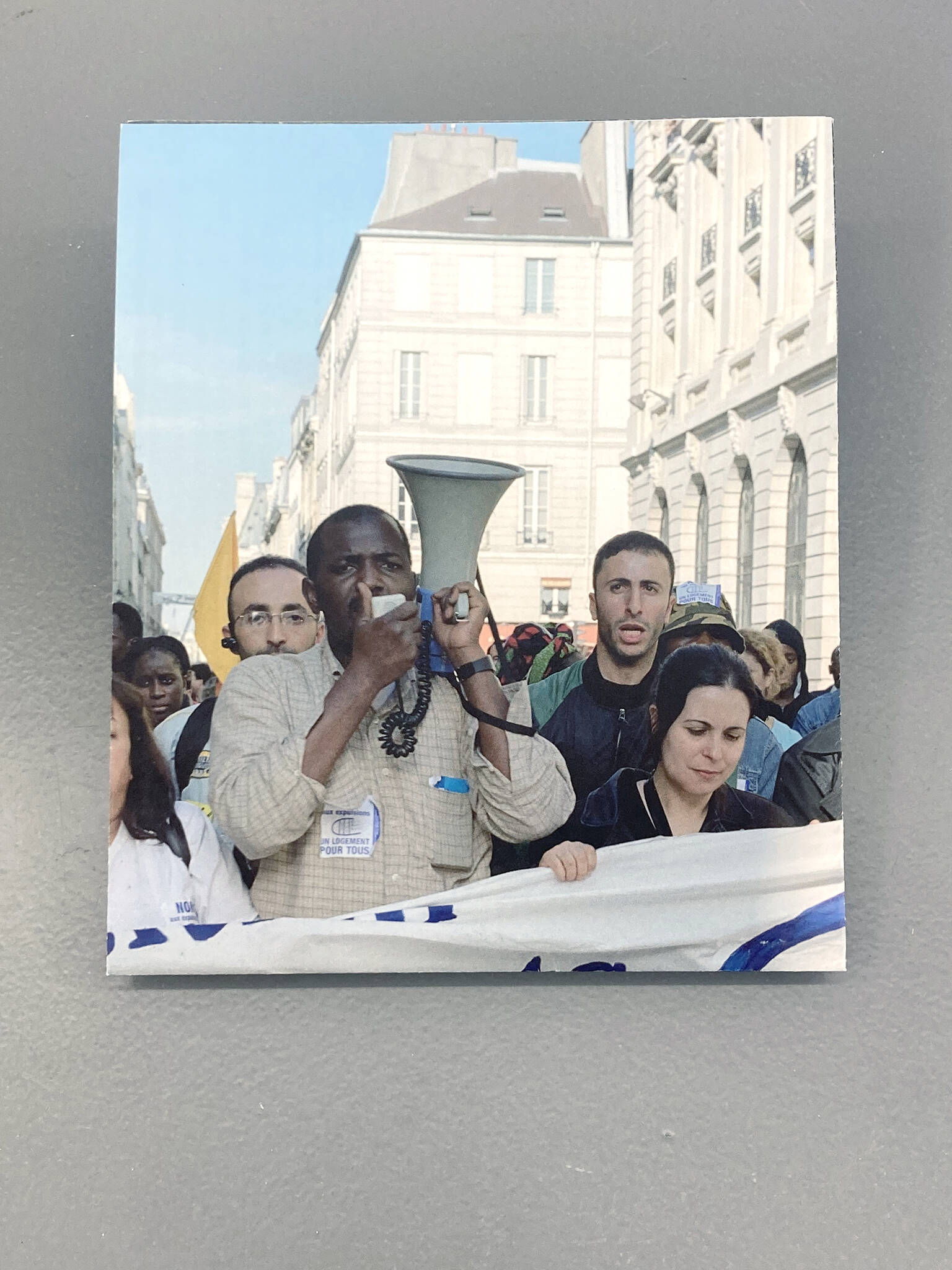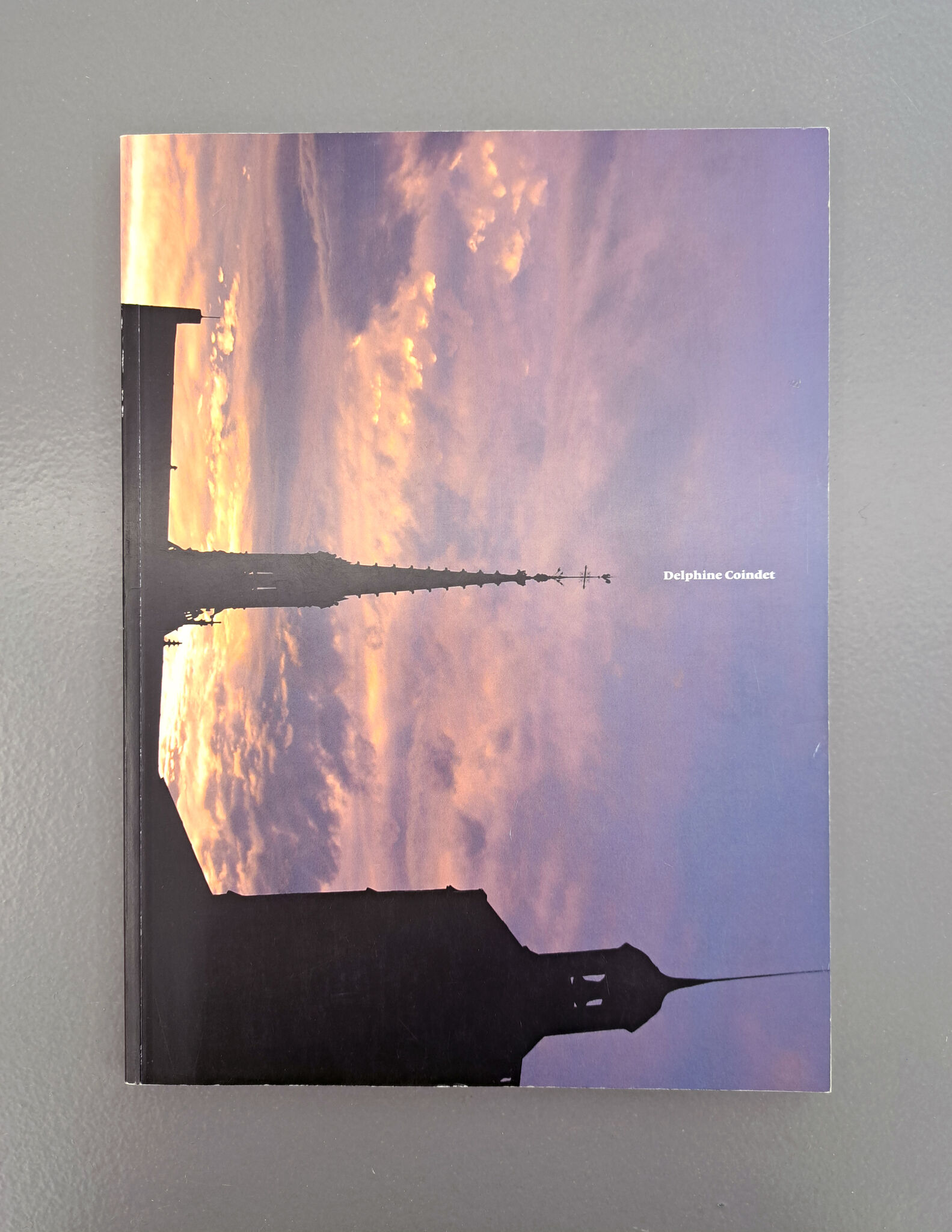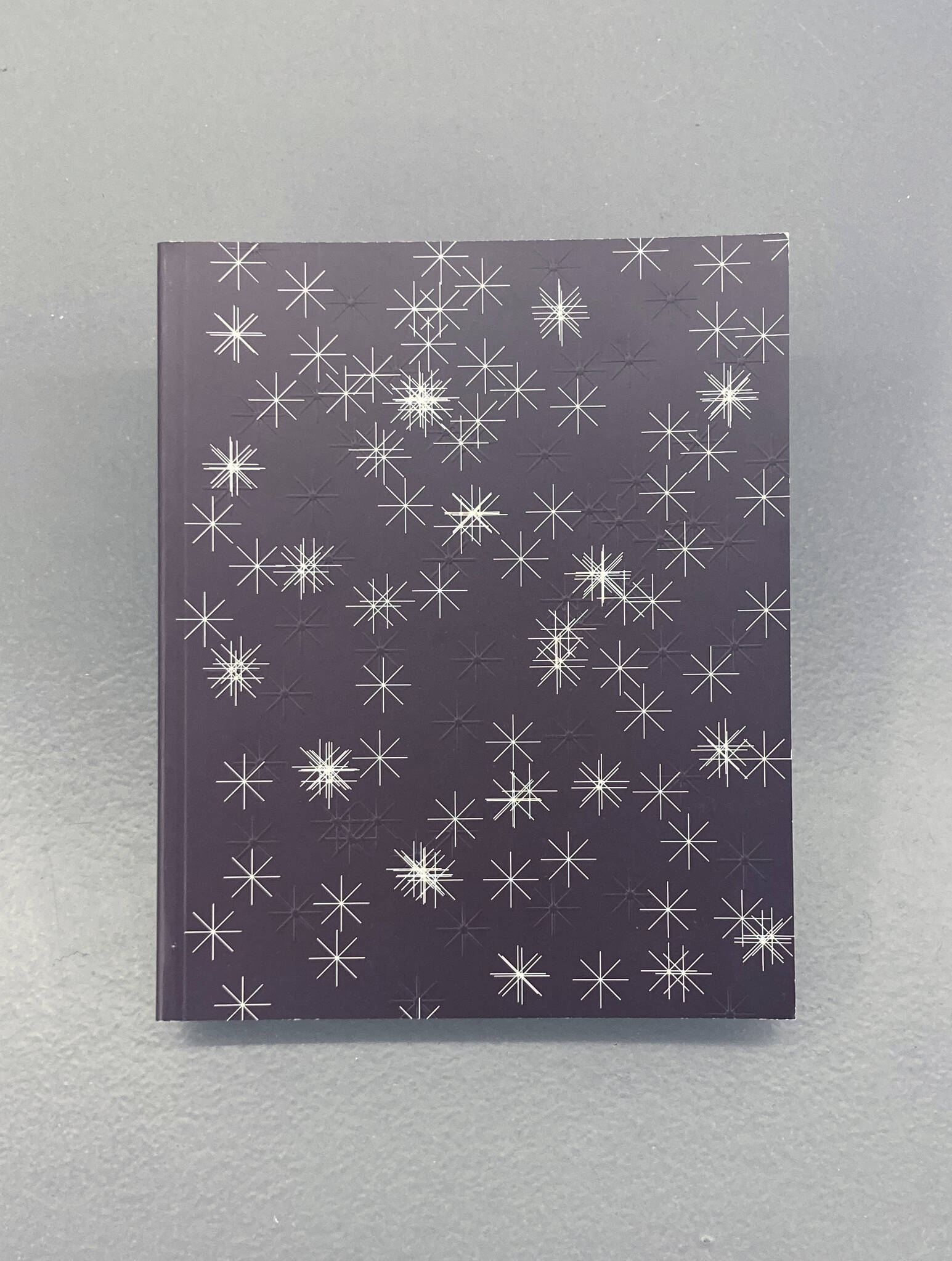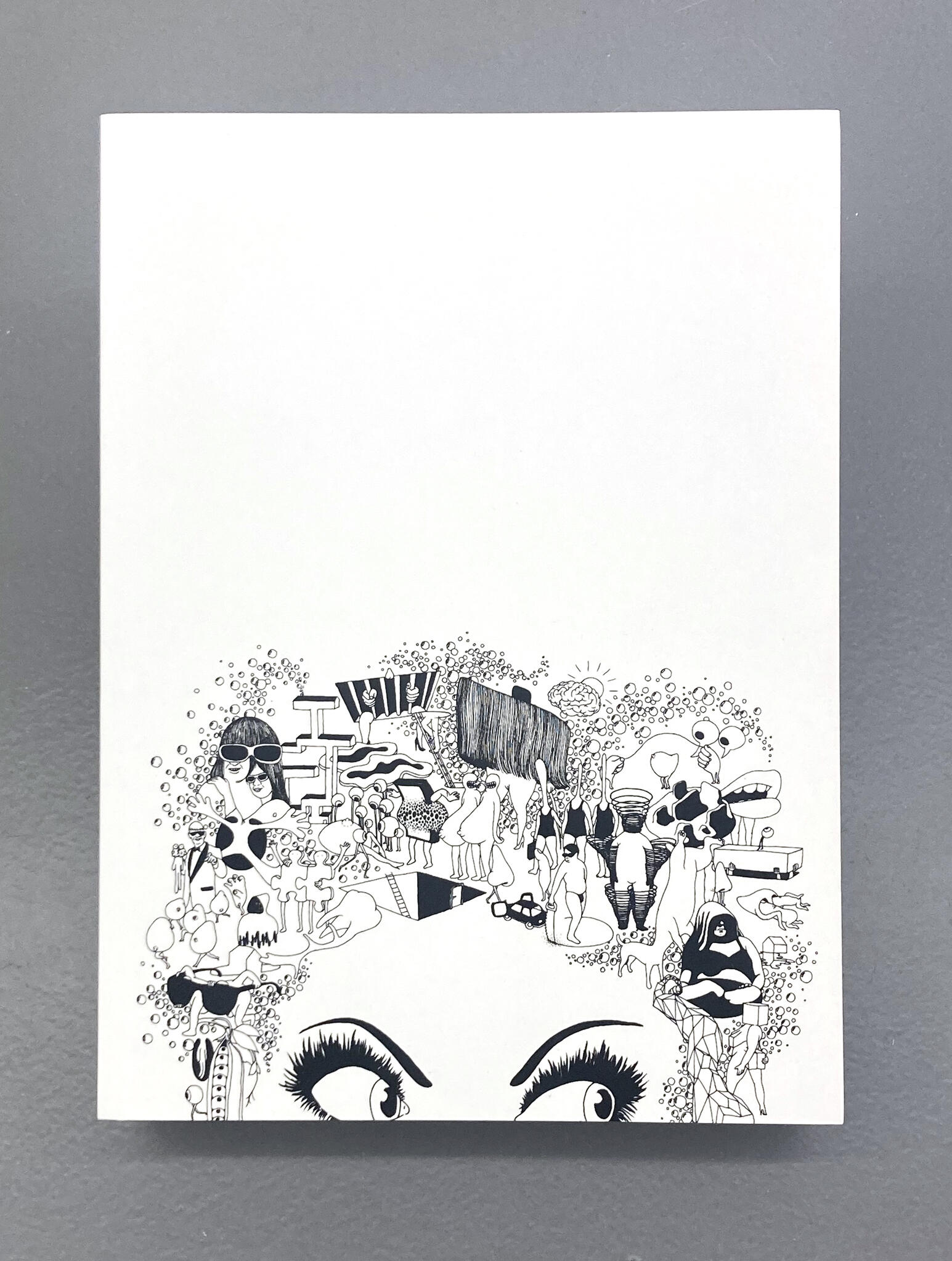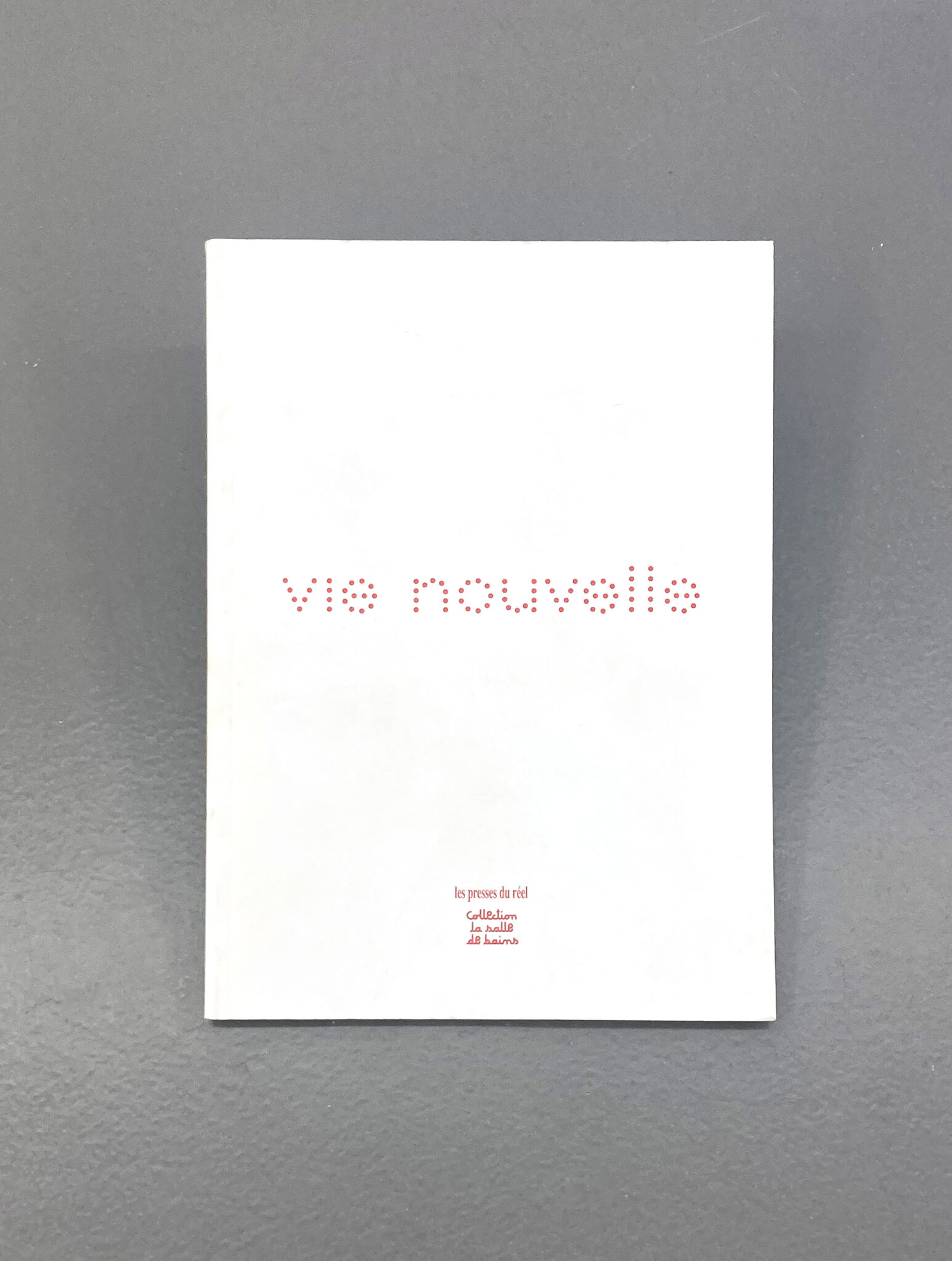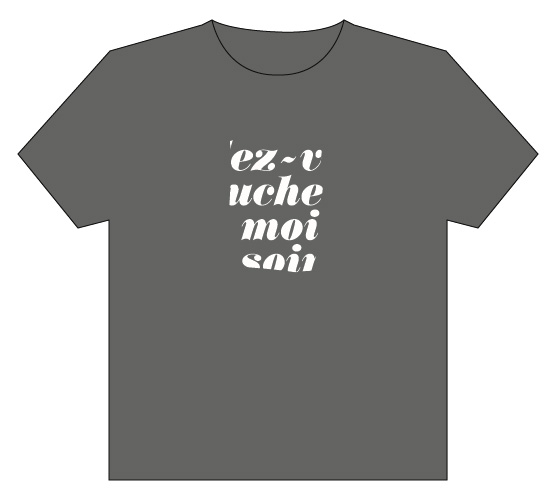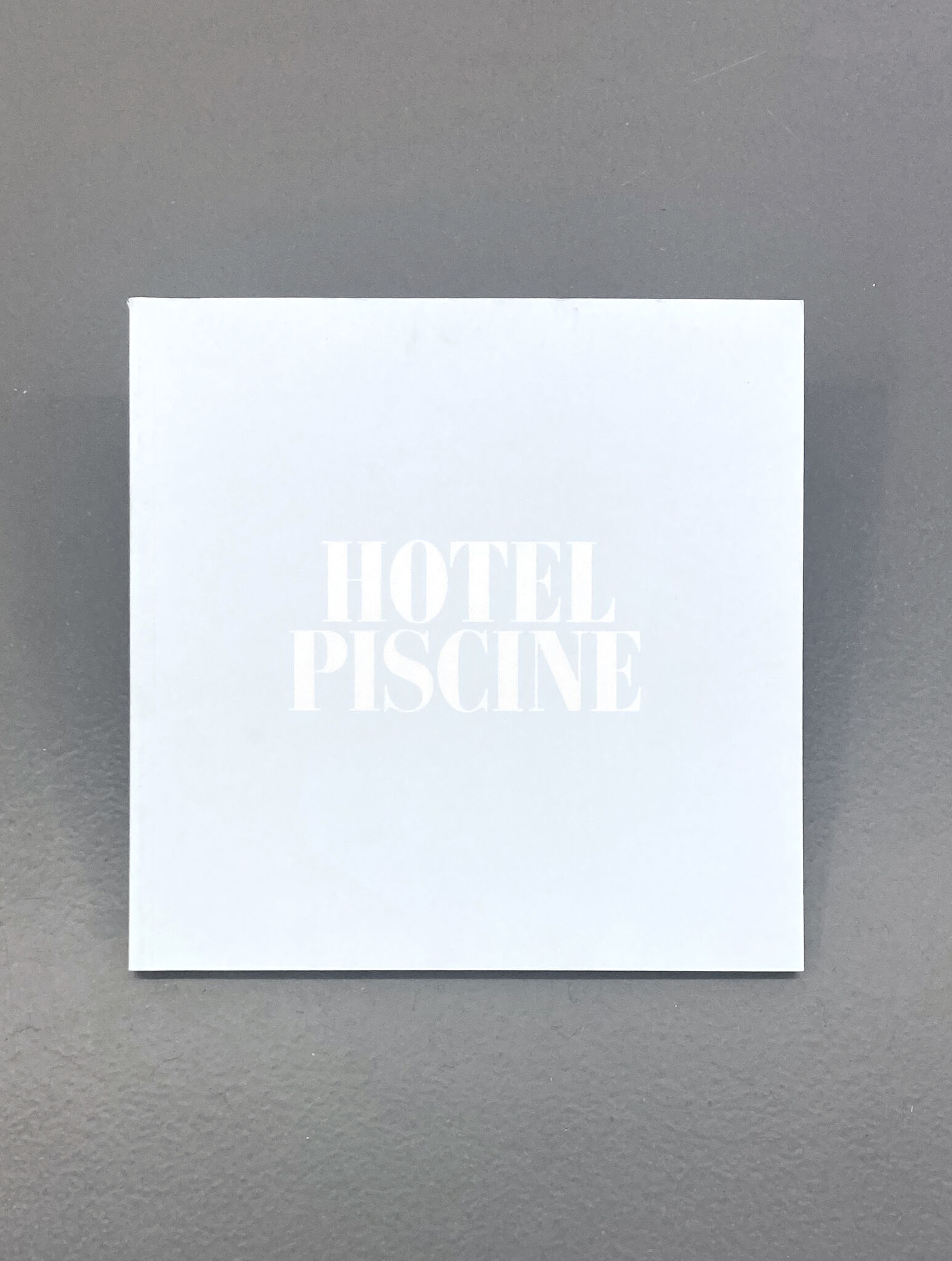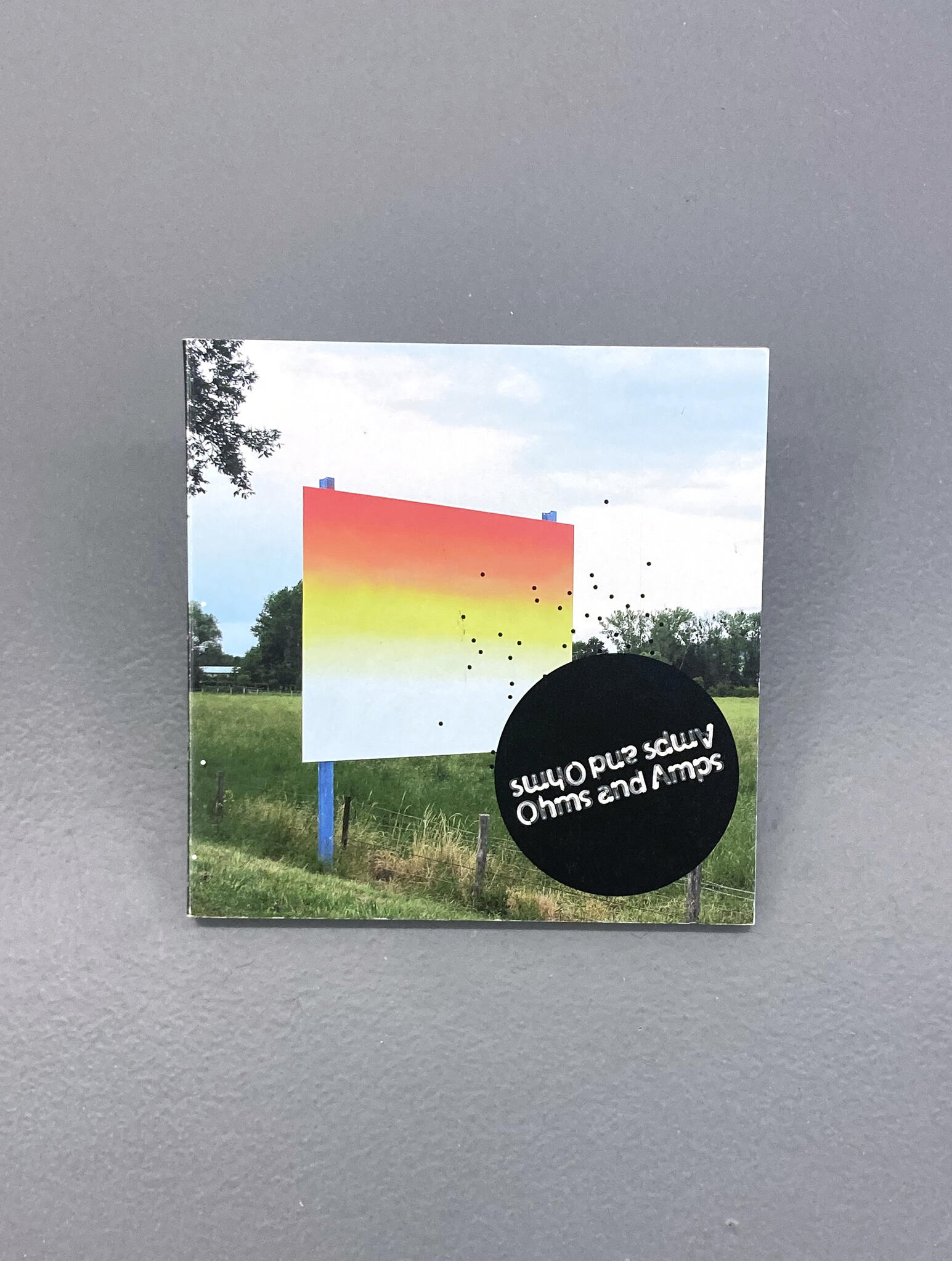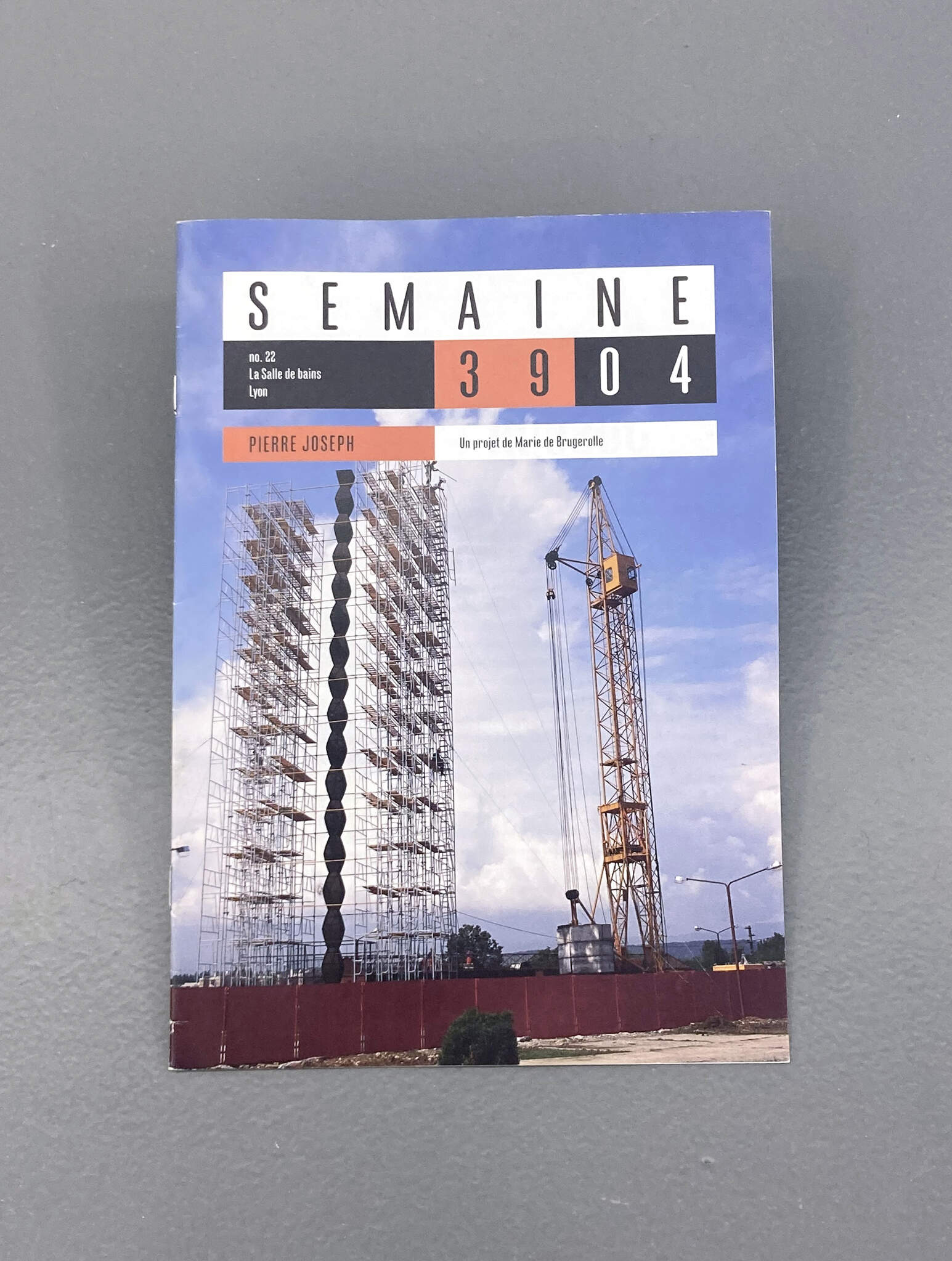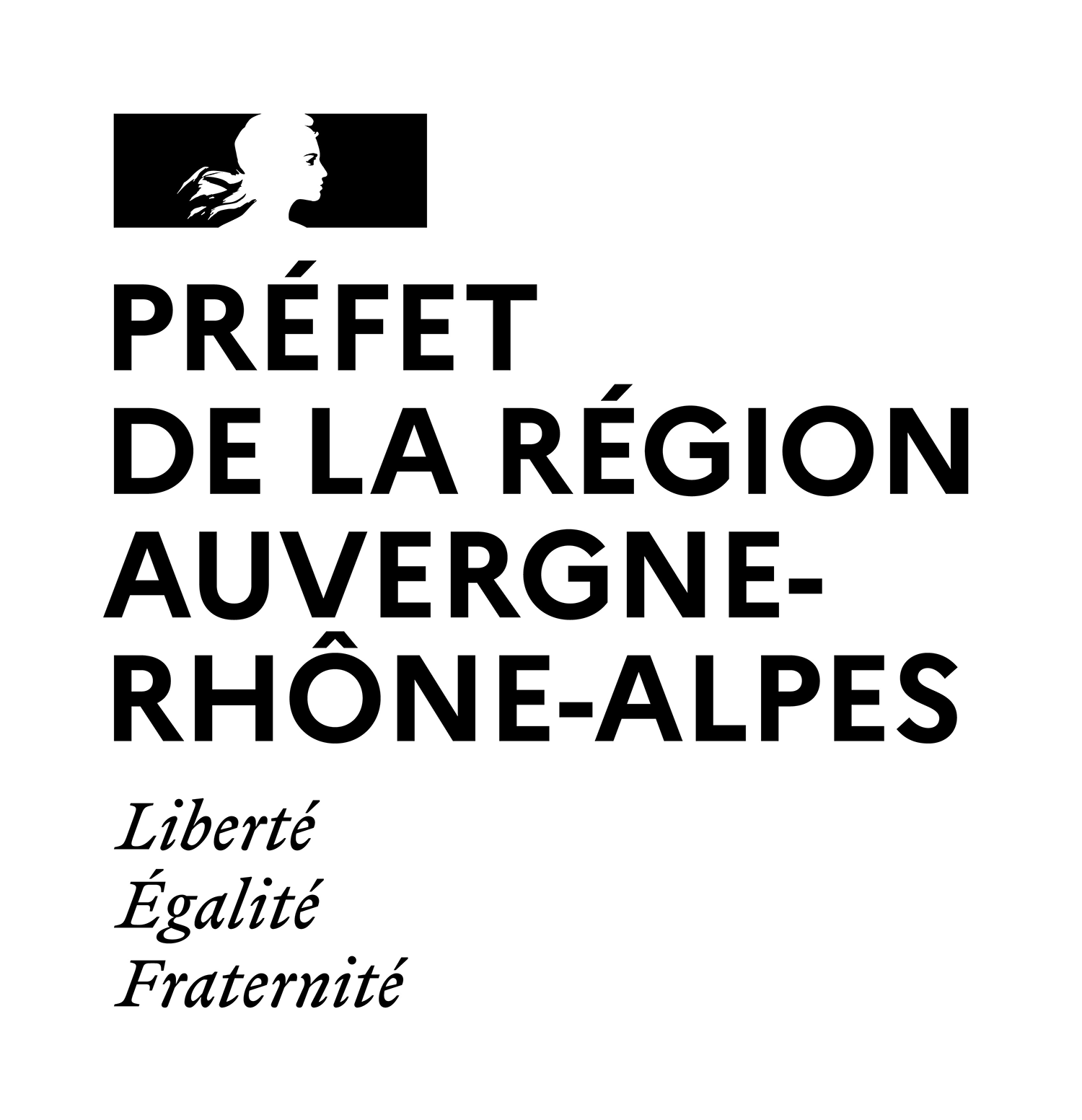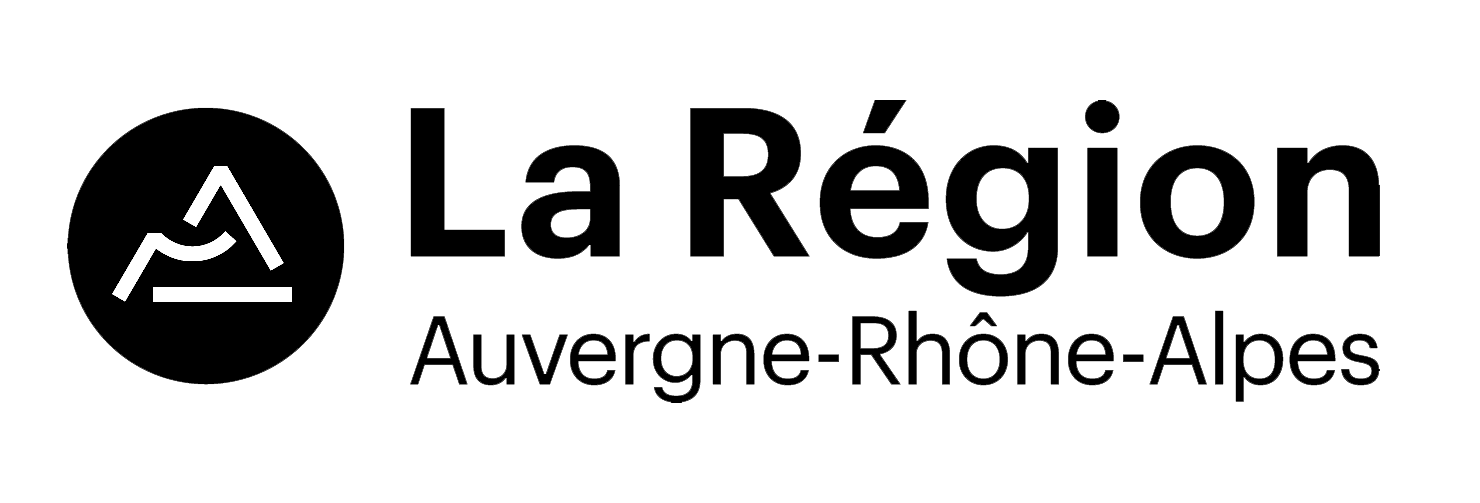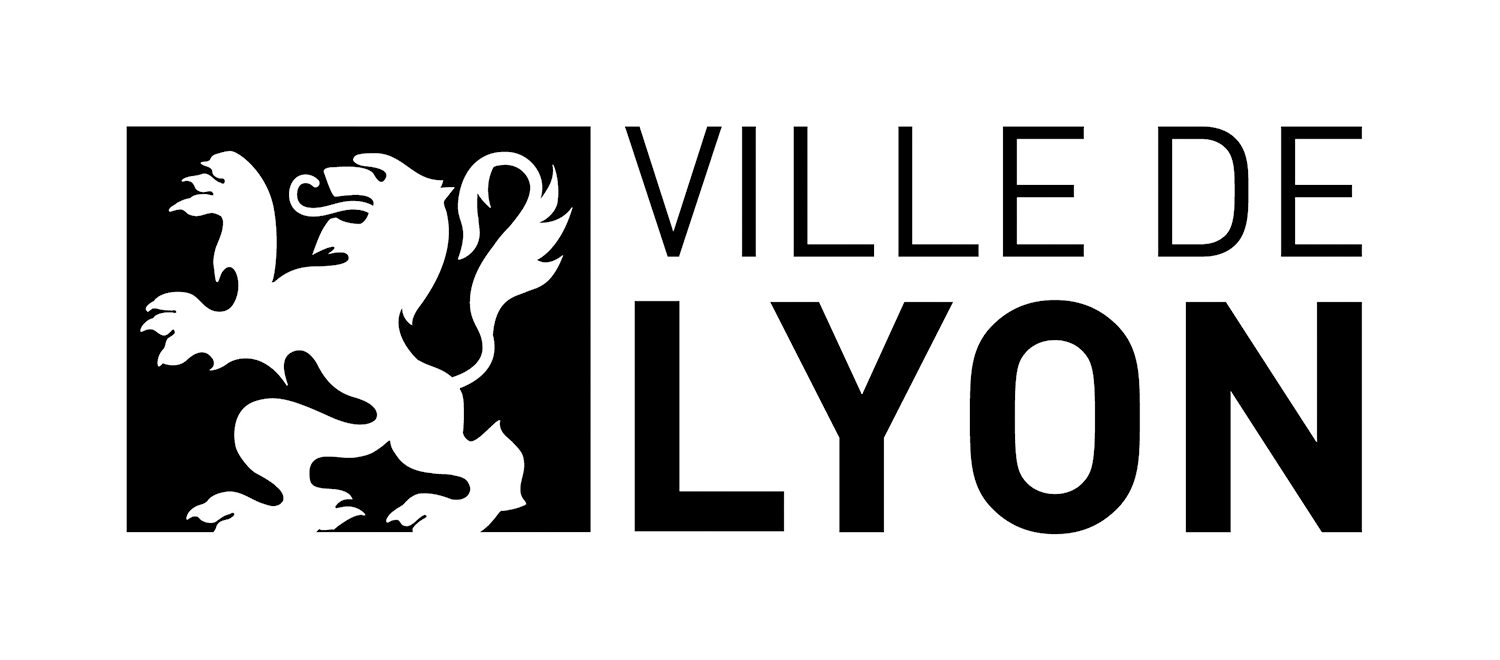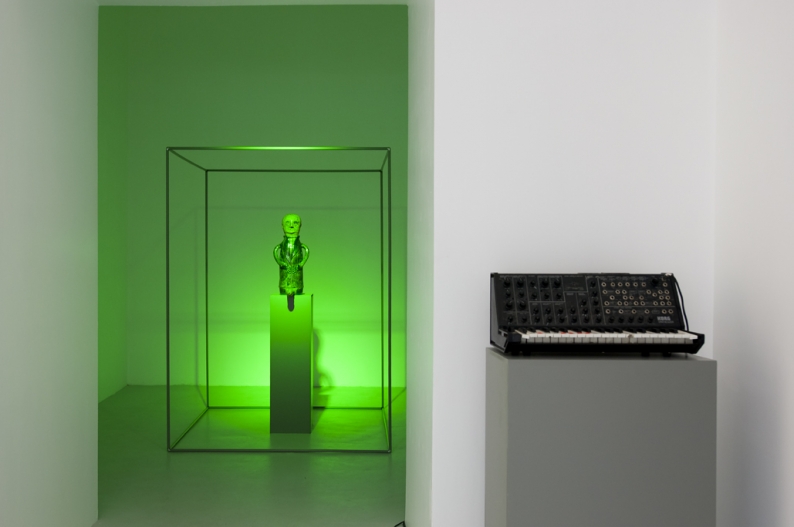
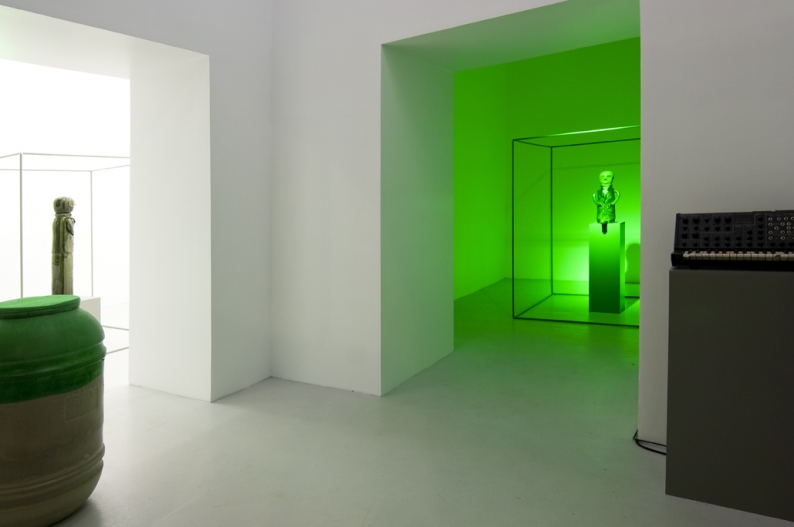
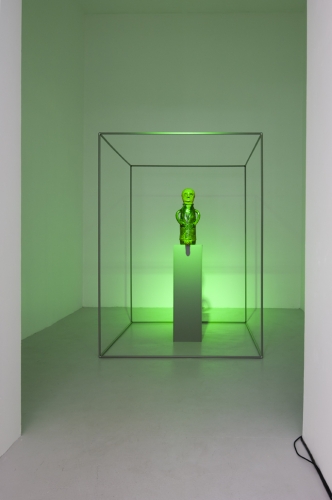
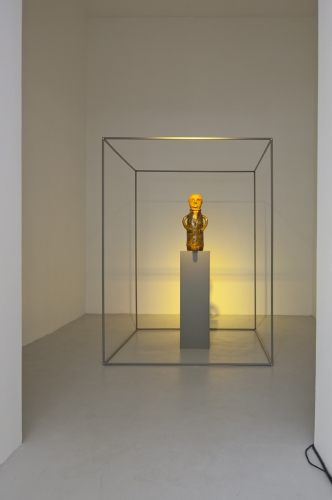
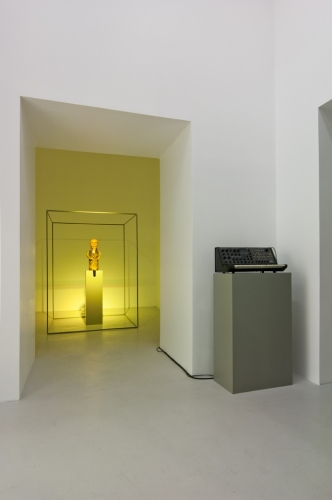
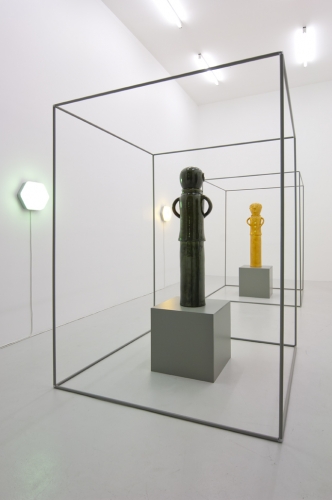
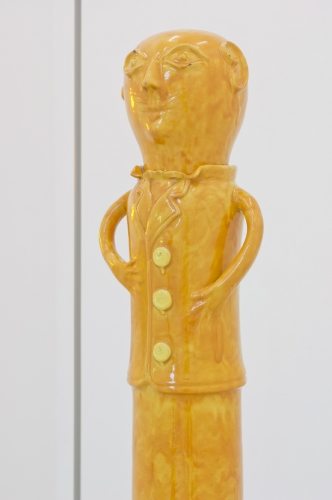
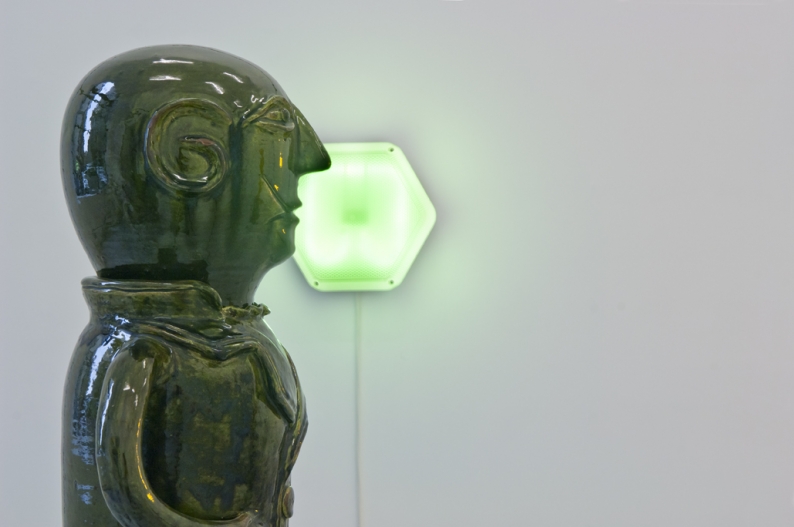
Photos : Aurélie Leplatre / © La Salle de bains
Photos : Aurélie Leplatre / © La Salle de bains
Mon plaisir… Votre travail…
Du 11 avril au 30 juillet 2011From 11 April to 30 July 2011
Blasted with sighs, and surrounded with tears,
Hither I come to seek the spring,
And at mine eyes, and at mine ears,
Receive such balms as else cure every thing.
But O ! self-traitor, I do bring
The spider Love, which transubstantiates all,
And can convert manna to gall;
And that this place may thoroughly be thought
True paradise, I have the serpent brought.
John Donne (1572-1631), Twickenham Garden
À l’occasion de sa première exposition personnelle en France (à la Salle de bains, à Lyon) l’artiste britannique Steve Claydon présente un nouvel ensemble d’objets. Mon Plaisir… Votre Travail… rassemble quatre sculptures autonomes qui sont comme régulièrement animées par un dispositif lumineux et auditif. L’exposition forme ainsi un tout, une installation performative dont les membres de l’équipe de la Salle de bains sont les performeurs temporaires. Leur rôle consiste à retirer et remettre la tête de la céramique exposée dans la petite salle en fonction de la couleur du spot lumineux et du son produit par le synthétiseur Korg placé à l’entrée.
De l’extérieur, l’occupation et la répartition de l’espace laisse une impression de calme et de simplicité. La répétition des structures métalliques (sorte de cadres tridimensionnels) et l’utilisation de socles comme outil muséographique traditionnel contribuent à dégager cette atmosphère. Dans la grande salle, les deux céramiques sont disposées symétriquement, elles sont face à face et sont chacune accompagnées, en guise de blason, d’un néon abstrait. Cependant, dès que la diffusion sonore reprend, ce système visuel est contrebalancé.
Steven Claydon assemble des objets hétérogènes remettant ainsi en cause la validité de toute taxonomie ou classification rationnelle. Il juxtapose une de ses sculptures (le fût ou barril) avec une céramique dessinée par lui (celle dont le bas s’appuie sur une casserole dont le manche est de forme phallique) et deux autres céramiques anthropomorphiques qu’il a emprunté à la décoration du restaurant français Mon Plaisir situé à Londres. L’artiste établit un principe d’équivalence, nivelant différents types de travail, de savoir-faire et de conceptions qui donne leurs formes et fonctions aux objets. Il en résulte un mélange incongru. Ces jeux de circulations et de déplacements rechargent les objets, densifiant leurs existences matérielles et leurs multiples significations.
L’artiste procède ainsi pour souligner la transformation qui s’opère dans ce geste banal qu’est l’appropriation et qu’il compare à une sorte de magie séculaire. Qu’il s’agisse de productions artisanales ou folkloriques, d’objets trouvés ou d’œuvres d’art, qu’ils aient été crées pour être consommés, fonctionnels ou contemplés, ils reposent tous sur un système de croyance dont nous sommes souvent à peine conscient. Bien que ses œuvres soient visuellement attrayantes et présentes, sa pratique se développe dans et depuis un entre-deux invisible, sorte de vide interstitiel dans lequel les constructions culturelles et la création des formes deviennent une indissociable émulsion.
Caroline Soyez-Petithomme
Hither I come to seek the spring,
And at mine eyes, and at mine ears,
Receive such balms as else cure every thing.
But O ! self-traitor, I do bring
The spider Love, which transubstantiates all,
And can convert manna to gall;
And that this place may thoroughly be thought
True paradise, I have the serpent brought.
John Donne (1572-1631), Twickenham Garden
À l’occasion de sa première exposition personnelle en France (à la Salle de bains, à Lyon) l’artiste britannique Steve Claydon présente un nouvel ensemble d’objets. Mon Plaisir… Votre Travail… rassemble quatre sculptures autonomes qui sont comme régulièrement animées par un dispositif lumineux et auditif. L’exposition forme ainsi un tout, une installation performative dont les membres de l’équipe de la Salle de bains sont les performeurs temporaires. Leur rôle consiste à retirer et remettre la tête de la céramique exposée dans la petite salle en fonction de la couleur du spot lumineux et du son produit par le synthétiseur Korg placé à l’entrée.
De l’extérieur, l’occupation et la répartition de l’espace laisse une impression de calme et de simplicité. La répétition des structures métalliques (sorte de cadres tridimensionnels) et l’utilisation de socles comme outil muséographique traditionnel contribuent à dégager cette atmosphère. Dans la grande salle, les deux céramiques sont disposées symétriquement, elles sont face à face et sont chacune accompagnées, en guise de blason, d’un néon abstrait. Cependant, dès que la diffusion sonore reprend, ce système visuel est contrebalancé.
Steven Claydon assemble des objets hétérogènes remettant ainsi en cause la validité de toute taxonomie ou classification rationnelle. Il juxtapose une de ses sculptures (le fût ou barril) avec une céramique dessinée par lui (celle dont le bas s’appuie sur une casserole dont le manche est de forme phallique) et deux autres céramiques anthropomorphiques qu’il a emprunté à la décoration du restaurant français Mon Plaisir situé à Londres. L’artiste établit un principe d’équivalence, nivelant différents types de travail, de savoir-faire et de conceptions qui donne leurs formes et fonctions aux objets. Il en résulte un mélange incongru. Ces jeux de circulations et de déplacements rechargent les objets, densifiant leurs existences matérielles et leurs multiples significations.
L’artiste procède ainsi pour souligner la transformation qui s’opère dans ce geste banal qu’est l’appropriation et qu’il compare à une sorte de magie séculaire. Qu’il s’agisse de productions artisanales ou folkloriques, d’objets trouvés ou d’œuvres d’art, qu’ils aient été crées pour être consommés, fonctionnels ou contemplés, ils reposent tous sur un système de croyance dont nous sommes souvent à peine conscient. Bien que ses œuvres soient visuellement attrayantes et présentes, sa pratique se développe dans et depuis un entre-deux invisible, sorte de vide interstitiel dans lequel les constructions culturelles et la création des formes deviennent une indissociable émulsion.
Caroline Soyez-Petithomme
Blasted with sighs, and surrounded with tears,
Hither I come to seek the spring,
And at mine eyes, and at mine ears,
Receive such balms as else cure every thing.
But O ! self-traitor, I do bring
The spider Love, which transubstantiates all,
And can convert manna to gall;
And that this place may thoroughly be thought
True paradise, I have the serpent brought.
John Donne (1572-1631), Twickenham Garden
On the occasion of his first solo exhibition in France (at la Salle de bains, Lyon) British artist Steve Claydon presents a new set of objects. Mon Plaisir… Votre Travail… brings together four autonomous sculptures animated on a regular basis by a visual, light and sound device. Thus, the exhibition consists of a whole performative installation including the staff of La Salle de bains as temporary performers. Their role is to remove and reinstall the head of the ceramic work shown in the small room according to the colour variation of the spot lighting it and to the soundtrack produced by the Korg analogue keyboard standing in the entrance.
From the outside the space organization gives an impression of simplicity underlined by the repetition of the metal structures and the use of traditional museographic tools such as plinths. In the large room the two ceramics are symmetrically displayed, facing each other, and each of them is accompanied by an abstract heraldic-like neons. However, as soon as the sound starts, this visual system is counterbalanced.
Following the exploration of the “thingly” character of the work of art, what he also calls “the thinglyness of things,” Claydon gathers heterogeneous objects calling into question the validity of any rational classification and taxonomy. He juxtaposes one of his sculptures (the barrel) with a ceramic designed by himself (the one with the phallic pot at the bottom) and two other anthropomorphic ceramics borrowed from the window of a French restaurant, Mon Plaisir, located in London. The result offers an incongruous mix. This game of circulation and shifts reload the density of the physical objects and of its potential meanings.
In this manner the artist aims to highlight the transformative dimension of the common gesture and process of appropriation which he likens to a kind of secular magic. Are they handcrafting, folk objects, found artefacts, vessels or artworks, are they made to be consumed or only contemplated, they all rely on a belief system whose we are barely aware of. Even if visually attractive his practice develops itself in and from this invisible in-between and interstitial void where both the cultural constructions, and the creation of shape become an indivisible emulsion.
Caroline Soyez-Petithomme
Hither I come to seek the spring,
And at mine eyes, and at mine ears,
Receive such balms as else cure every thing.
But O ! self-traitor, I do bring
The spider Love, which transubstantiates all,
And can convert manna to gall;
And that this place may thoroughly be thought
True paradise, I have the serpent brought.
John Donne (1572-1631), Twickenham Garden
On the occasion of his first solo exhibition in France (at la Salle de bains, Lyon) British artist Steve Claydon presents a new set of objects. Mon Plaisir… Votre Travail… brings together four autonomous sculptures animated on a regular basis by a visual, light and sound device. Thus, the exhibition consists of a whole performative installation including the staff of La Salle de bains as temporary performers. Their role is to remove and reinstall the head of the ceramic work shown in the small room according to the colour variation of the spot lighting it and to the soundtrack produced by the Korg analogue keyboard standing in the entrance.
From the outside the space organization gives an impression of simplicity underlined by the repetition of the metal structures and the use of traditional museographic tools such as plinths. In the large room the two ceramics are symmetrically displayed, facing each other, and each of them is accompanied by an abstract heraldic-like neons. However, as soon as the sound starts, this visual system is counterbalanced.
Following the exploration of the “thingly” character of the work of art, what he also calls “the thinglyness of things,” Claydon gathers heterogeneous objects calling into question the validity of any rational classification and taxonomy. He juxtaposes one of his sculptures (the barrel) with a ceramic designed by himself (the one with the phallic pot at the bottom) and two other anthropomorphic ceramics borrowed from the window of a French restaurant, Mon Plaisir, located in London. The result offers an incongruous mix. This game of circulation and shifts reload the density of the physical objects and of its potential meanings.
In this manner the artist aims to highlight the transformative dimension of the common gesture and process of appropriation which he likens to a kind of secular magic. Are they handcrafting, folk objects, found artefacts, vessels or artworks, are they made to be consumed or only contemplated, they all rely on a belief system whose we are barely aware of. Even if visually attractive his practice develops itself in and from this invisible in-between and interstitial void where both the cultural constructions, and the creation of shape become an indivisible emulsion.
Caroline Soyez-Petithomme

Mon plaisir… Votre travail…, 2011
carton d'invitation
La Salle de bains reçoit le soutien du Ministère de la Culture DRAC Auvergne-Rhône-Alpes,
de la Région Auvergne-Rhône-Alpes et de la Ville de Lyon.
de la Région Auvergne-Rhône-Alpes et de la Ville de Lyon.







